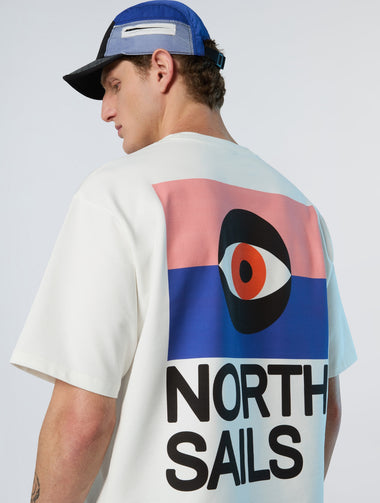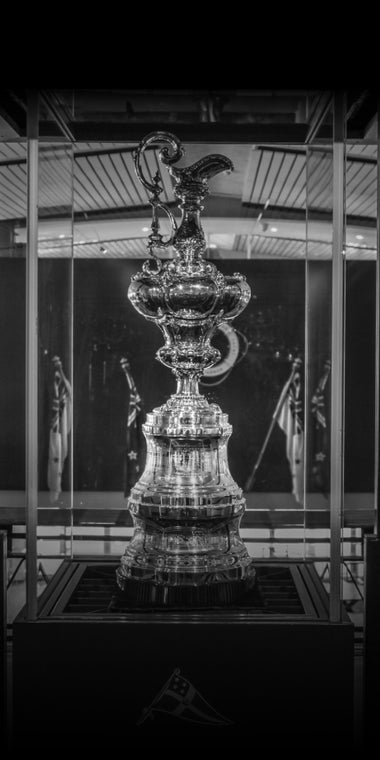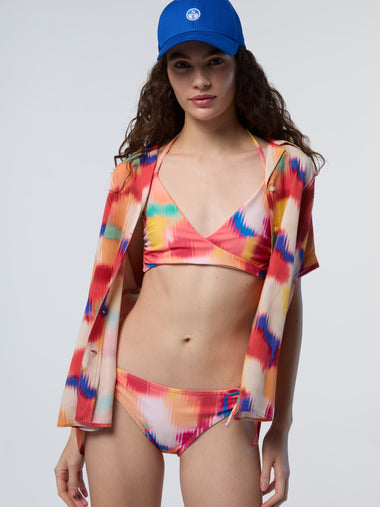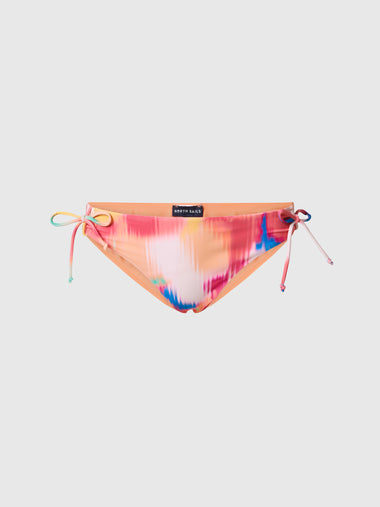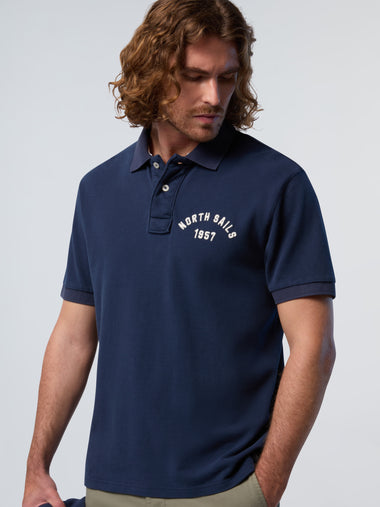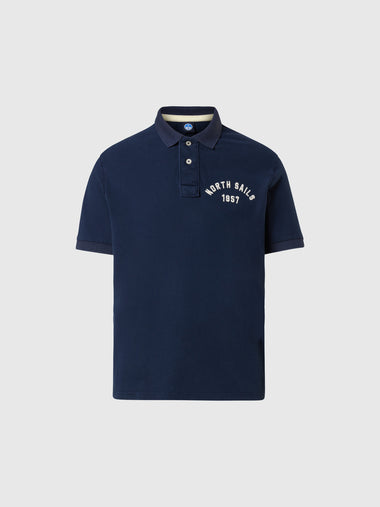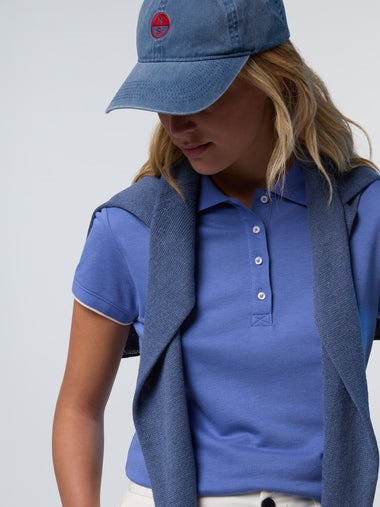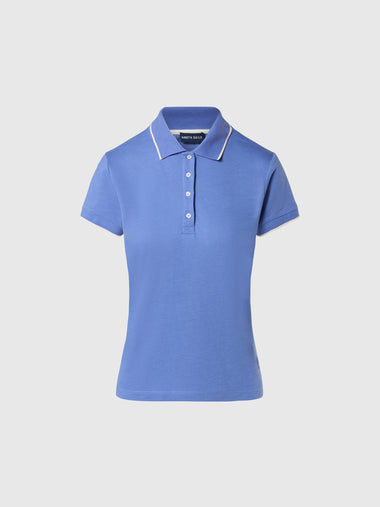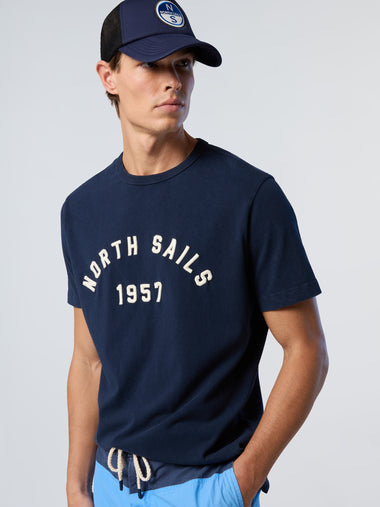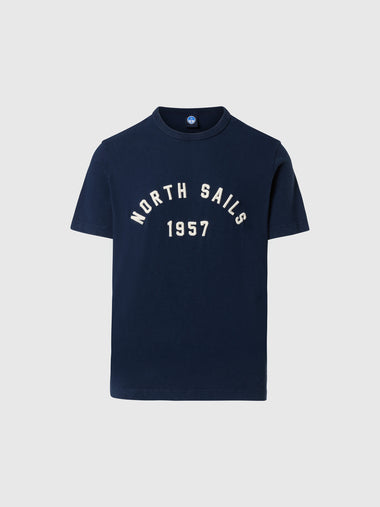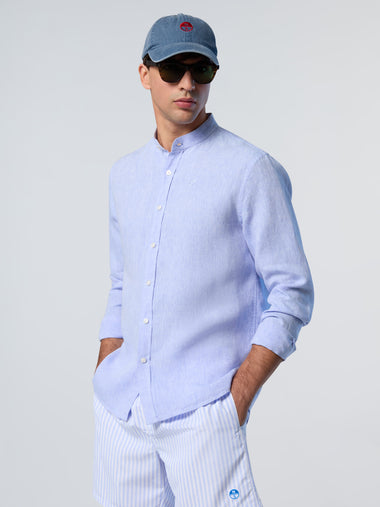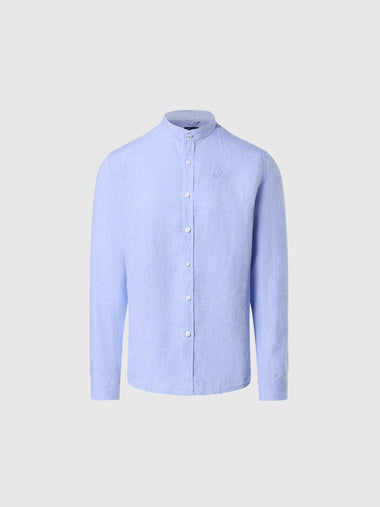NORTH SAILS BLOG
All
Events
Guides
News
People
Podcast
Sustainability
Tech & Innovation
Travel & Adventure

QUEEN'S CUP WEATHER
Be Prepared For The 2019 Queen's Cup Race
Sign Up For Complimentary Weather Forecasting
Provided by our expert friends at Sailing Weather Service.
READ MORE
READ MORE

NEWS – 3ÈME PLACE EN COUPE DU MONDE POUR LE 470 SUISSE
3è PLACE EN COUPE DU MONDE POUR LE 470 SUISSE
Coupe du Monde de Gênes
Un fantastique résultat de l’équipage 470 Sailingforadream / SUI – 46, Kilian Wagen et Grégoire Siegwart. Ils ont su saisir leur chance et signent leur premier podium en Coupe du Monde !
Interview avec Kilian Wagen :
- Présente-toi en deux mots : sur quoi navigues-tu, depuis quand ? Quelles sont les prochaines étapes de vos projets ?
« Je navigue avec Grégoire Siegwart depuis 6 ans maintenant, et c’est notre 4ème année en 470. On vient de rentrer de Gênes avec une médaille de bronze sur une étape de Coupe du Monde… notre premier podium à ce niveau ! Et on repart déjà à San Remo, aux championnats d’Europe, puis on enchaîne direct avec les finales de Coupe du Monde à Marseille.
Après notre tour en Europe, cap sur le Japon pour un camp d’entraînement de trois semaines afin d’observer et analyser le plan d’eau pour les Jeux Olympiques de 2020, pour lesquels on essaie de se qualifier. »
- Depuis quand naviguez-vous avec des voiles North Sails ?
« La première fois que j’ai navigué avec North, c’était tout jeune en Optimist ! Ensuite, dès la deuxième année en 420 avec Greg, on est à nouveau passé sur North, et depuis nous n’avons jamais changé. Nous sommes régulièrement en contact avec la branche au Japon, qui s’occupe principalement des voiles de 470. Le service et la qualité sont vraiment géniaux, et le travail est extrêmement précis. Même lorsque l’on commande qu’une seule voile, on sait qu’on aura exactement les mêmes caractéristiques, et c’est vraiment le top car on est tellement sûrs que le travail sera bien fait. Ça nous est arrivé de sortir une voile neuve le jour même d’une régate. »
- Est-ce que tu as un bon conseil à nous donner ?
« Vous pouvez sans problème vous fier aux ‘tuning guides’ de North pour les réglages de vos voiles J ! Ils sont vraiment bien faits, il y a plein de bons conseils, et c’est une très bonne base pour apprendre les trucs de pro pour bien régler vos voiles, et les dernières astuces à appliquer aux voiles que vous venez d’acheter. »
Toute l’équipe de North Sails Suisse félicite Kilian & Greg pour leurs excellents résultats, et leur souhaite le meilleur pour les prochaines régates !
READ MORE
READ MORE

NEWS – FAISONS ÉQUIPE POUR ACCÉDER AUX MEILLEURS PRIX
FAISONS ÉQUIPE POUR ACCÉDER AUX MEILLEURS PRIX
Pour bénéficier de rabais importants, commandez vos voiles entre juin et juillet
North Sails accorde désormais la tarification de ses voiles au taux d’occupation de ses ateliers de fabrication. CONTACTEZ-NOUS DÈS MAINTENANT ! Par téléphone au 022 782 32 22 ou par email à info@ch.northsails.com Téléchargez la brochure complète ici. Demandez votre devis en ligne !
READ MORE
READ MORE

DRACHEN SM 2019 IN STECKBORN
DER VORLÄUFIGE SAISONHÖHEPUNKT
Die Drachen SM 2019 in Steckborn
Am vergangenen Wochenende wurden sowohl in der Drachen- wie auch der Starklasse die neuen Schweizermeister gekürt.
North Sails Schweiz gratuliert herzlich und ist stolz, Segellieferant der beiden Schweizermeister zu sein!
Die sehr gute Regattaorganisation und wie im YCS-Standard üblich, war auch das Vermessen und Kranen top organisiert und sehr speditiv.
Die Regattatage begannen mit Schönwetter (wie fast jedes Mal am Untersee) und wir konnten im Verlauf der 4 SM-Tage total 5 teilweise sehr schöne, meist schwachwindige Läufe segeln.
Mit den Rängen 1-1-1-2-11 konnten wir die Meisterschaft knapp mit 1 Punkt Vorsprung vor dem favorisierten Team Wittwer aus Thun und vor dem Team Reisacher aus Staad für uns entscheiden.
Am Abend des SM-Siegs haben wir noch recht ausgelassen gefeiert.
Besten Dank an den YCS unter der Leitung von Urs Ruppli (ebenfalls North Segel) für die tolle und nicht überladene, absolut gelungene SM 2019.
Norbert Stadler, Ralph Müntener, Urs Burger SUI 297 Tachiston.
Rangliste
📸 Werner Münger
Star Schweizermeisterschaft in Luzern
Auch diese Meisterschaft mit 25 Teams aus 5 Nationen wurde nicht gerade vom Wind verwöhnt.
Trotzdem konnten an drei Tagen jeweils 2 Schwachwindläufe gesegelt werden, wobei der Wind zum Teil recht löchrig war. Aber die Wettfahrtleitung unter Peter Stucki hatte das Beste aus den Bedingungen gemacht und für alle faire Läufe gesteckt.
Gewonnen hat nach den sechs ausgeschriebenen Läufen das Team Benu Seger / Walter Oess. Sie fuhren mit dem Grosssegel M-16 und der J-1F Fock
Swiss Star Class
Der Event war ein Erfolg, auch wenn die Regatten nicht den gewünschten Erfordernissen zu einer Meisterschaft in Bezug Lauflängen und den Windstärken entsprochen haben. Speziellen Dank geht an den Yacht Club Luzern, der mit seiner Gastlichkeit uns über die 4 Tage sehr verwöhnt haben. Sei dies mit einer hervorragenden Organisation, Verköstigungen und stets Nachgefüllten Fässer Bier und mit den freundlichen' Barmaids' am AVIA Bar-Wagen. Aber auch ein Dankeschön der Wettfahrtleitung, Jury und allen Helfer - auch jenen der Starflotte LUV.
Rangliste
READ MORE
READ MORE

CLASSE MINI-TROPHÉE MARIE-AGNÈS PÉRON
CLASSE MINI
TROPHÉE MARIE-AGNÈS PÉRON
De beaux résultats pour les voiles North Sails
📸 Simon Jourdan / Winches Club
Les prévisions météorologiques auront eu raison du comité de course. En effet, la dépression Miguel a obligé le comité à avancer le départ de la 15e édition du Trophée Marie-Agnès Péron au jeudi 6 juin et à réduire le parcours à 90 miles entre la mer d’Iroise et la Bretagne Sud. Le nouveau parcours fut une superbe course de vitesse durant laquelle nos coureurs ont brillé.
En classement série, Ambrogio Beccaria (Geomag/ ITA 943) s’adjuge la première place. Félix de Navacelle (FRA 916) et Jean-René Guilloux (Crédit Agricole 35/ FRA 915) se placent respectivement 3ème et 4ème.
En classement prototype, après une lutte acharnée, Axel Tréhin (FRA 945) monte sur la plus haute marche du podium, et n’est plus, comme il se nommait "poulie d’or de la voile".
Prochaine étape: le mythique phare du Fastnet dont le départ sera lancé le dimanche 16 juin 2019.
READ MORE
READ MORE
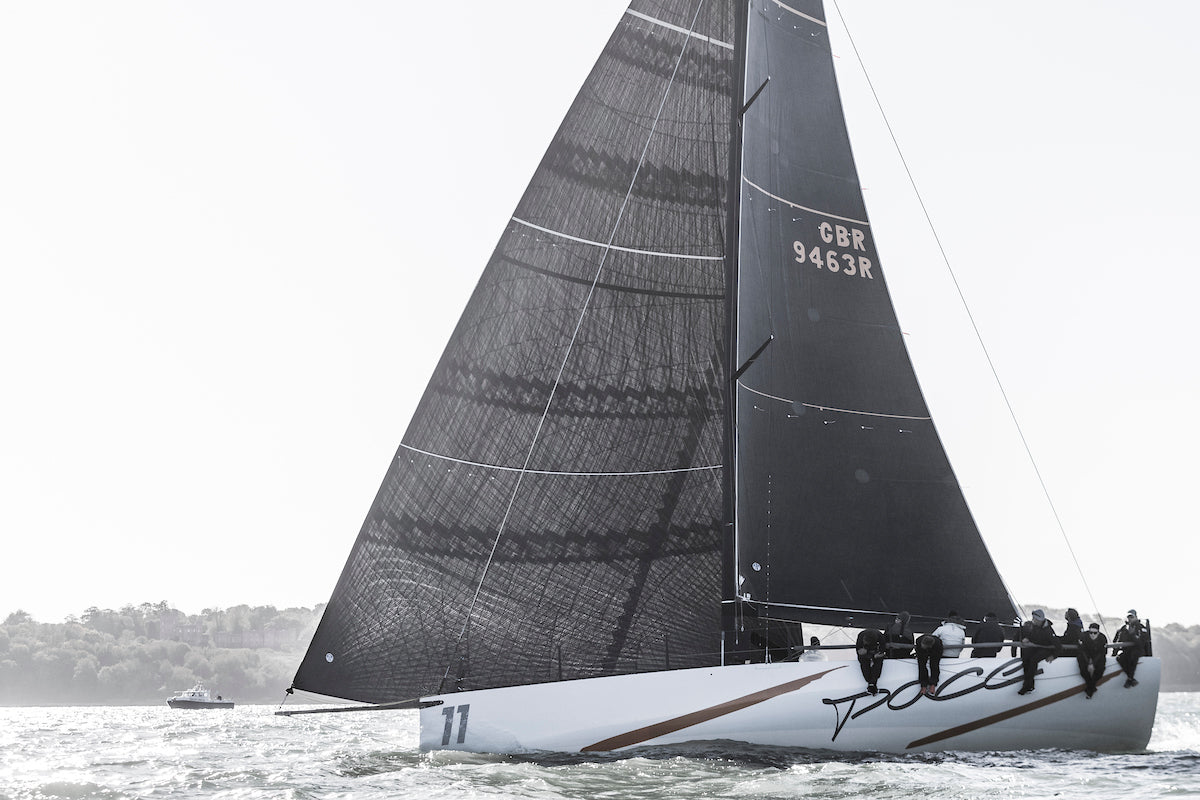
HELIX
HELIX
Versatility, Self Supporting, Forward Projecting
Helix Load Sharing Technology is a North Sails exclusive sail structure and shaping solution. Helix sails are more versatile, self supporting, forward projecting, and are engineered to furl using the sail’s composite structure and not heavy, expensive torque cable.
North Sails Design and Development teams have worked closely with top racing programs around the globe to apply our unique design and manufacturing capabilities to the inherent problems when combining free-flying reaching sails with furling. In the past, these sails required tight, straight, heavy and highly loaded cables to provide furling functionality. These cables prohibit optimal flying shape which Helix Load Sharing technology now resolves.
Torsional resistance and vertical luff load capacity are now a direct part of the sail structure, providing better aerodynamic flying shape while still accommodating the tension and torsional loads required for furling.
Furling a free-flying sail is nothing new, either with or without a luff cable. Code Zero’s first gained prominence during the 1997-98 Whitbread Race where the sail luff was reinforced to support high furling loads but the sails were difficult to trim and handle. Since that time, a wide range of furlers and furling cables have been developed – all attempting to improve Code Sail furling performance. The result has been highly efficient furling systems and anti-torque cables, but the problem of optimal flying shape has remained.
More recently, Load Sharing Technology has evolved which re-distributes the luff loads into the sail membrane. Most notably, in 2013 ORACLE TEAM USA and Emirates Team New Zealand AC72 America’s Cup catamarans, used North headsails that took on a portion of the headstay load reducing overall rig loads and providing a better flying shape with less sag. Helix was being born.
While Helix is offered in both Paneled and 3Di construction, 3Di molded composite sails are particularly well suited to this application. Precise spread filament tape vectors are placed along the load bearing luff catenaries in variable densities creating unique-to-North, lightweight free-flying furling sails.
At this stage in development, Helix sails bridge the gap between headsails and spinnakers. When looking at specific examples, the Helix makes Code Sails faster and more stable – across a wider range of wind angles.
Helix sail shaping is different than a cabled sail. Helix Sails tend to flatten, project the luff and provide a wider entry angle, requiring specialized design molds. Cabled sails tend to hang off the cable when tightened adding unneeded luff curvature. Helix is a standard feature on 3Di Downwind and Panel Code Zeros. Helix is optional on many additional 3Di Code and specialty reaching sails.
Helix Code sails bridge the gap between headsails and spinnakers. The increased luff projection from Helix makes Code Sails faster and more stable – across a wider range of wind angles. Helix is a standard feature on 3Di Downwind and Panel Code Zeros. Helix is optional on some additional 3Di Code and specialty reaching sails.
READ MORE
READ MORE
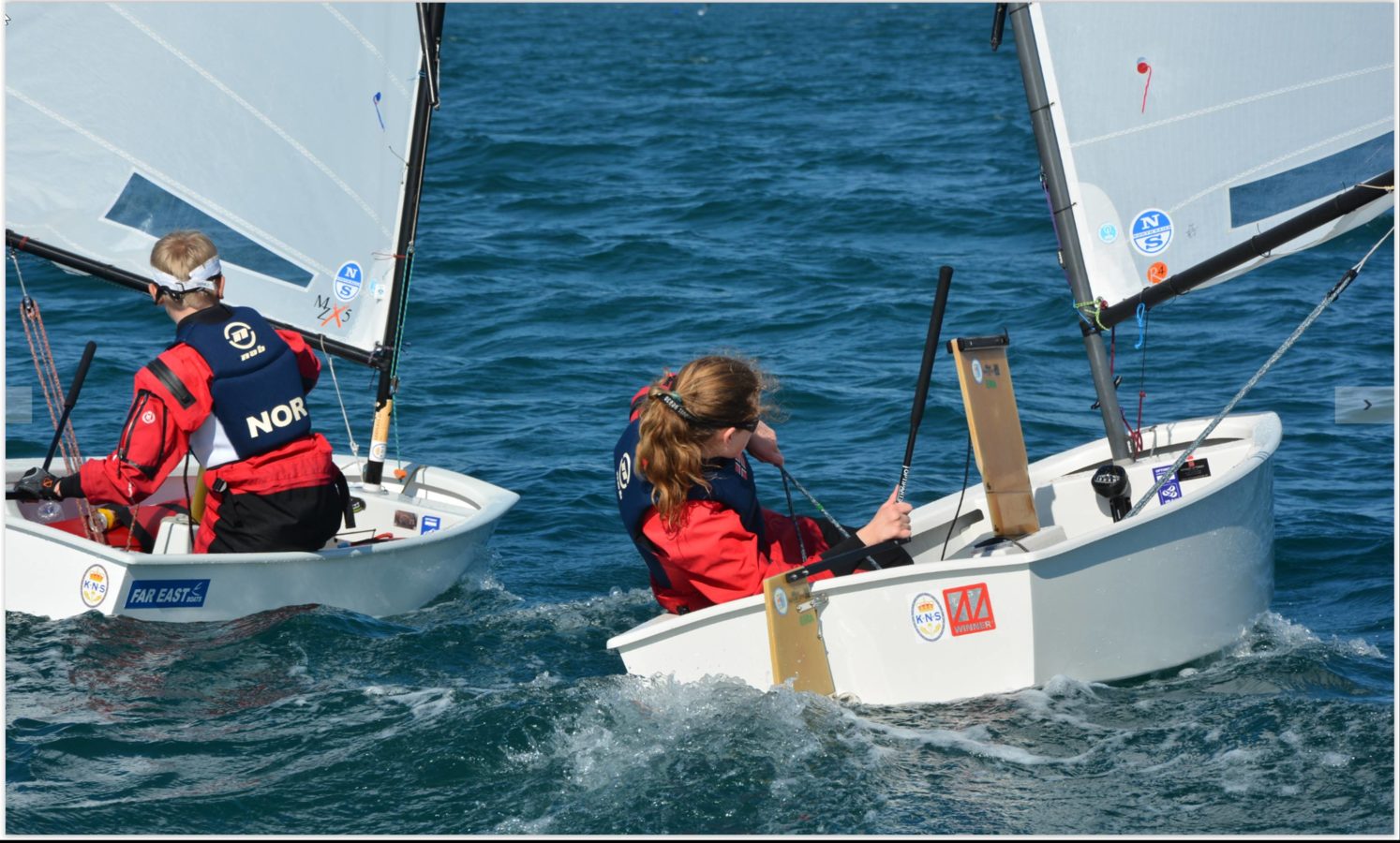
WHICH OPTIMIST SAIL IS BEST FOR ME?
In the order of their importance these are: the sailor’s weight, the expected wind conditions, and the sail’s construction.
READ MORE
READ MORE

ANTIGUA LOCAL KNOWLEDGE
ANTIGUA LOCAL KNOWLEDGE
What To Expect For The 2019 Optimist World Championship
The island of Antigua is excited to host the 2019 Optimist World Championship. This is a record-breaking year, with over 250 sailors from 64 countries registered. We spoke with North Sails expert and local Andrew Dove to learn what sailors should expect when they leave the harbor.
Hurricane Season
July is the beginning of hurricane season, so there could be some days where the winds are built up from storms that have established nearby. Small squalls are common, but typically the rain and wind are localized and pass by quickly. The best part about these squalls is a break from the sunshine.
Heat & Dehydration
When competitors get off the plane, they will instantly notice the humidity (98%) even if they are arriving from Florida. They will also have to work to avoid a sunburn. Staying out of the sun whenever possible, and wearing protective clothing while racing, is essential.
Dehydration is another concern, especially since it will be hard to identify. A key indicator is heat exhaustion, which may be easy to mistake for the natural fatigue from hiking all day in strong winds. Sailors will need to drink water (adequately supplemented with electrolytes) constantly to stay ahead.
Water, Waves, and Current
It is very rare to have no wind and smooth waters here; deep water racing with waves is what you should expect. Because the ocean swell has crossed the Atlantic, the wave crests will be quite far apart. Water temperature will be warm, in the upper 80s.
Close to shore, the water is only a few meters deep and there’s a current of 1.0-1.5 knots running from east to west. If the sailing area is more offshore, the current won’t be as noticeable in the deeper water. The course marks will be attached with high-grade fishing line, because chain would drag in the deeper water and strong currents.
The Wind
Except for localized squalls, there is always a concern during hurricane season, winds typically come from the easterly quadrant and are not very shifty. Gusts that build from passing squalls storms may last five to ten minutes, then will transition back to what was there originally. The wind is generally more onshore in the mornings and increases in the latter part of the afternoon. Trends will be evident after a few races, and there shouldn’t be too many surprises. It would be very unusual to have a calm day, but you never know!
Club members here in Antigua run great regattas each year, and our island will serve up some fantastic racing conditions that your sailors will remember forever. Just remember: avoid sunburn and heat exhaustion!
📸 Benedicte Beckers
READ MORE
READ MORE
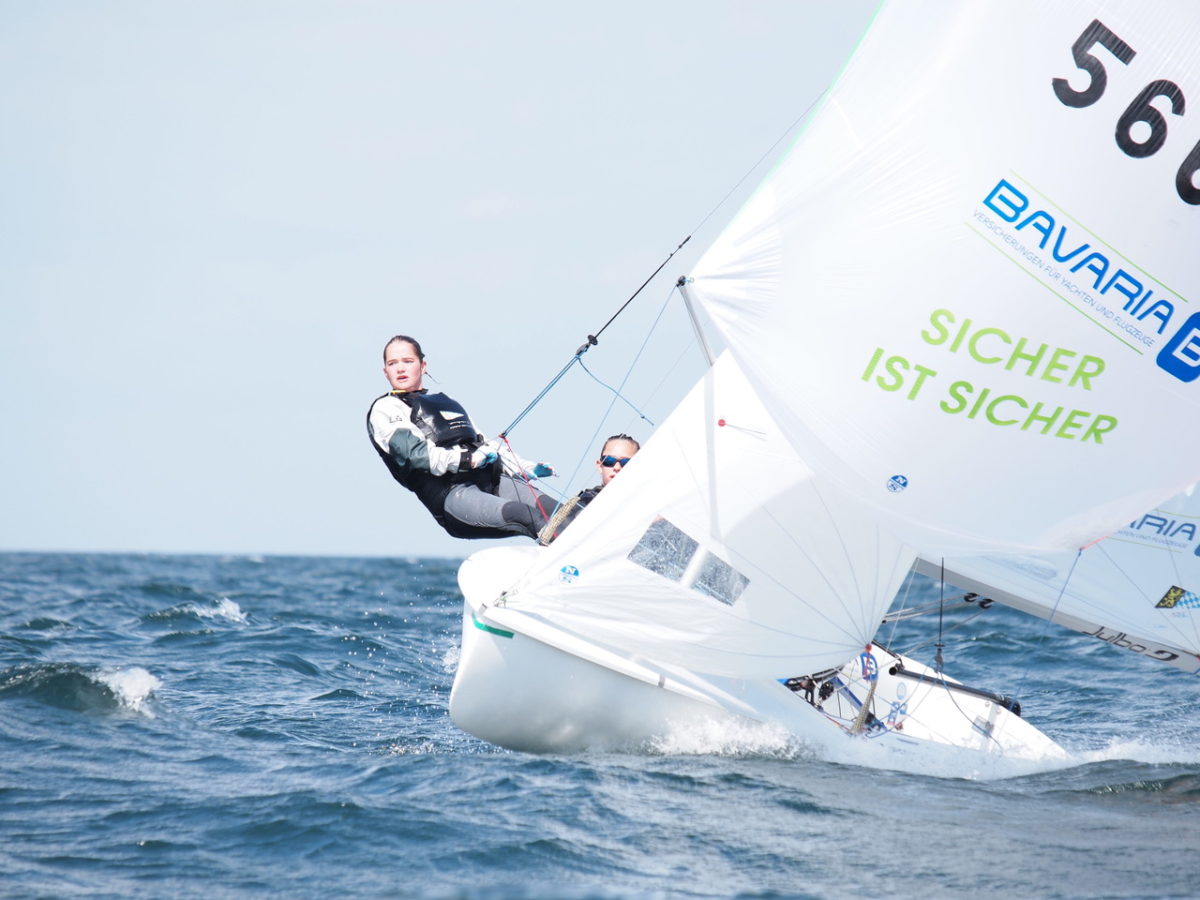
NORTH KUNDEN IM OPTI UND 420ER ERFOLGREICH
Nach neun Wettfahrten konnten sich Sophie Steinlein/Oda Hausmann vor ihrer Schwester und Teamkollegin Theresa Steinlein/Lina Plettner und Kristian Lenkmann/Philip Hall durchsetzen.
READ MORE
READ MORE

THREE GENERATIONS OF THISTLE SAILORS
THREE GENERATIONS OF THISTLE SAILORS
The Tumlin Family Shares Their Secrets on Keeping The Tradition
If you have been on a Thistle regatta, you know how the Thistle class is like a big family. For some families, Thistle sailing is a tradition that holds them together for many generations. North expert Paul Abdullah had a chance to interview Beth Tumlin to learn more about their passion for the boat and their secrets on how to keep the whole family sailing in the class for three generations and counting.
How the Tumlin Family Started Sailing Thistles?
Bill’s parents, W.L. and Jeanne Tumlin, joined the Atlanta Yacht Club (AYC) in 1952 and bought their first Thistle, #598, the same year Beth’s family, the Norwood’s joined and started racing Snipes. Bill was 8 and Beth was 9 years old when they each learned to sail. Both came from families of four children and seven of the eight children sailed and most of them ended up marrying sailors. AYC provided a sense of community, extended family and breeding grounds for love.
Speaking of love, Bill Tumlin and Beth Norwood’s romance began at the Snipe Districts in 1968, and they married in 1969. The headline of the AYC newsletter, the Scuttlebutt, read “Thistle Marries Snipe, Object Prams.” From 1972 – 1975 Bill and Beth had three daughters who would become the third generation in the family to fall in love with the Thistle and sailing in general.
Your Daughters are Both Sailors, and You Have Grandchildren Sailing. How Were You Able to Get Them to Fall in Love With the Sport?
Jennifer, the first daughter, attended her first regatta in Knoxville at 3 weeks old and Tracy, the second daughter attended hers at 3-1/2 weeks old. This was possible because W.L., Bill’s father was also racing and his mother Jeanne, a.k.a. Mimi, was the built-in baby-sitter. Early exposure and inclusion allowed all three daughters, including Natalie, the third, to become quite curious about sailing. Before becoming of age to crew in races, adventures to Kowabunga Island (on Clark-Hill Lake in Augusta, GA) on the family’s Aquacat made sailing fun. The trampoline on the Aquacat made sailing possible for Natalie who was in a wheelchair and had “round legs”. Sailing was an every weekend activity that the whole family participated in, whether it be pleasure sailing, classes, fleet races or travel regattas. Having parents, grandparents, aunts, uncles and cousins race together or against one another, sailing was a family affair. This, combined with the strong and lifelong friendships made, sailing is not only in the DNA but woven in the fabric of Jennifer and Tracy’s life.
Sailing was an every weekend activity that the whole family participated in, whether it be pleasure sailing, classes, fleet races or travel regattas.
Tracy met her husband, Darryl Allardice, sailing Thistles. He was a product of AYCs Adult Sailing program and crewed with Kay Redmond. Jennifer met her husband Mike at AYC at a party. Darryl and Mike sail several regatta together every year, with copper mugs filled with Dark and Stormies along with a plate of cheese and sausage. They have helped teach the Tumlin family the concept of “PPR – Professional Pleasure Racing”.
The Atlanta Yacht Club Hosts the Dixie Regatta Every Year Over Memorial Day Weekend. Who’s Idea Was It to Have an Annual Theme, and When Did That Begin?
The first Dixie Regatta was held in 1952, but it wasn’t until 1994 that several clever and creative fleet wives started developing themes. The club had had a mechanical bull for 4th of July and it was a huge success! The gals proposed that the fleet bring back the mechanical bull, and the “Western Dixie” was the first theme. Every year since has been a different theme. For years they designed t-shirts appropriate to the theme – giving one to every skipper. Each year, the Dixie welcomes 50-65 competitors and their families.
The gals proposed that the fleet bring back the mechanical bull, and the “Western Dixie” was the first theme.
What Keeps Your Family Committed to the Thistle Class Over Other One-design Classes?
The reason for sticking with the Thistle is multi-faceted. The performance of the Thistle is second to none. It is fast, agile and can be sailed as a beginner boat (without the spinnaker) or as a high—performance racer. It is versatile. It can be sailed with two of us or we can pile lots of friends and kids on it.
The biggest motivator to stick with the Thistle during the teenage years was the friendships that were made. There was a strong preference to hang out with sailing friends as opposed to going to high school parties or participating in other sports. Travelling to regattas on the weekends was fun, and although friends didn’t live in the same towns, there was quality time together on and off the boat. These relationships have continued through adulthood.
The biggest motivator to stick with the Thistle during the teenage years was the friendships that were made. These relationships have continued through adulthood.
Although Bill and Beth grew up in different boats, together they have been strong competitors in Snipes and Y-Flyers. But they always come back to the Thistle. It’s the people, the fleet camaraderie, and the boat. Beth would say it’s the fabulous flying spinnaker! Thistle Fleet 48 is one of the largest Thistle fleets in the U. S., boasting 67 active families. In the past few years, the Fleet has instigated the “Rally Mentality” where on Saturdays, we race for the fun of it, laid-back, water guns shooting, kids dragging off the back, and yet they usually make it around the whole race course and are excited to win. The boats get points for participation, then on Sunday, the more serious racers sail to win on Sundays.
What Advice Would You Give to Sailing Families With Young Children?
Advice to young families: try to get the kids engaged early – don’t leave young ones out, make it fun, inclusive, encourage friendships, and learn competitiveness. Let your kids put their hands in the water to feel how fast the boat is moving through the water. Explore the waterways, beach the boat and bring a picnic lunch to enjoy on land. Fun experiences like these, where “sailing” or “racing” aren’t the primary focus will lead to a comfort level on the boat. These type of experience are what enabled our family to love sailing from very young ages.
Advice to young families: try to get the kids engaged early. Let them put their hands in the water to feel how fast the boat is moving. Explore the waterways, beach the boat and bring a picnic lunch to enjoy on land.
Bill and Beth’s two grandkids, Brynn (11) and Addie (9) Garrett have spent time in the Thistle. They’ve yet to sail a regatta but they have participated in rally days and fleet races. Brynn likes controlling the sails and experiencing the freedom of going out on the lake and not having any concerns. Addie likes to steer the boat. She said having the experience of going wherever she wants to go and choosing where she wants to go is fun. Both girls agree that Thistle gunwales are fun to walk on, like a balance beam, and that on light wind days, it’s really fun to jump off the Thistle and drag behind. Their friends have even hooked up tubes behind their Thistles. Bottom line, according to the Tumlin-Garrett Girls, a Thistle for kids can be fun, scenic and be peaceful.
READ MORE
READ MORE

CUSTOMER CORNER: TORONTO ISLAND SAILING CLUB
CUSTOMER CORNER: TORONTO ISLAND SAILING CLUB
Members Come Together To Support A Great Cause
Toronto Island Sailing Club (TISC) hosted our Season Launch Party on the evening of May 11, 2019. Our Launch event is our kickoff event of the season where we welcome our new members to our club. Most importantly, our event includes a silent auction and all the proceeds from the event go directly to offsetting the high costs of running our community sailing club. This year, thanks to North Sails, we were able to add a raffle to our evening which was a great addition to the party – providing additional revenue for the club and creating a lot of exciting conversation amongst our attendees.
Toronto Island Sailing Club is a non-profit community-based club with between 90 and 150 members. We have 14 Albacores (dinghies), 3 Lasers and 2 Hobies at our clubhouse on Centre Island. Our club is completely volunteer driven and offers members of all skill levels an affordable opportunity to learn to sail through instructed CANSail 1, 2, 3 and 4 level courses. Thanks to the commitment and passion of our membership and the generous donations from regional businesses our club is celebrating our 54th anniversary this year.
Thanks to North Sails, we added a raffle to our evening providing additional revenue for the club and creating a lot of exciting conversation amongst our attendees.
Our 2019 Launch event was kindly hosted by Boxcar Social Harbourfront with a delicious selection of food and craft beverages and a fantastic view of Toronto’s inner harbour. We had 45 attendees, with 14 new members and raised over $2,000 from our silent auction and raffle thanks to our donors. North Sails Toronto generously provided us with a number of high quality apparel and educational resources on sail care and trim, in additional to our raffle prize, all of which were in high demand from both our novice and seasoned members.
Thank you North Sails for helping our event to be a huge success!
Sincerely,
Sarah McMillan
2019 Social Director
READ MORE
READ MORE

MELGES IC37 TIPS: VOLUME ONE
MELGES IC37 TIPS: VOLUME ONE
Racing Season Begins With Training Weekend In Newport, RI
📸 Melges Performance Sailboats
A historic weekend in Newport with nineteen brand new IC37s sailing together for the first time ever, in fantastic weather conditions paired with a fun and educational environment. All teams were eager to learn and sail the new boats. North Sails and North U presented a full-weekend clinic and coaching session, sharing their expertise to kick-start this amazing new fleet with the potential to be one of the most fun one design summers ever for the New York Yacht Club.
North experts Tim Healy, Kimo Worthington and IC37 sail designer Mike Marshall, with the help of North U’s Bill Gladstone compiled a series of tips and takeaways from the training session to share with the teams in preparation for the Leukemia Cup.
📸 Melges Performance Sailboats
Consistent Spinnaker Takedowns
For both windward side and leeward side takedowns, time the drop with a decisive turn down to unload the spin. Timing and positioning is everything.
Approaching the leeward mark: The Bow Team & Pit
Just prior to the start of the takedown, save time and speed up the maneuver by preloading the takedown/retriever line. No slack should be present once the maneuver initiates. At this time the sheet gets released and overhauled, take down line gets hauled down and halyard comes off. The lead bow person can assist the retriever line by also pulling down and focus on getting the middle-foot of the kite up to keep the tack inside the lifelines. The second crew assists with the middle of the kite to the clew, making sure no cloth is over the lifelines. If you divide up the foot, and keep pulling until you reach the corners, the kite shouldn’t ever be in the water. The tack is released with the pole at the same time after foot is in control and on deck or in the hatch. The tack line is then pulled into hatch until the knot stops at the clutch and the pole is pulled in. If it happens at the same time, the tack release will help bring the pole-in, and the tack will be the last corner inside the hatch. This is a good place to start for consistent takedowns. We are sure as teams get more time with the boats this will get refined.
As the wind picks up, start the takedown process earlier and be careful not to overstand the gate marks. It is much better to soak a bit into the marks than it is to be coming in hot with no wiggle room and sail past the marks. You will find in big breeze, a conservative take down will almost always gain a point or two at each leeward gate. Understand your crew strengths from the mast forward and set them up for a successful mark rounding. Depending on the takedown, they may need more time.
📸 Melges Performance Sailboats
Leeward Mark Approach
When it’s breezy aim for the middle of the gates so you so can round either mark and give yourself room for the drop. It’s a big loss to overstand the gates.
Ease the vang downwind in bow up mode. The traveler should be all the way to leeward and just use the mainsheet for leech tension. A loose vang will reduce helm so driver can go bow up in order to get to the proper heel angle and to reach the target speed. As speed builds, apparent wind will go forward and VMG will increase.
Backstay on downwind in overpowering conditions (15+knots). This will keep mast aft in order to keep the luff of the spin tight, keeping draft forward and exit straight for better heavy air, bow up, shape. Backstay on will also flatten the main so the boat will not trip up in a big puff or crashing into a wave. Remember: Release old backstay in a Jibe! Not releasing will be a guaranteed broach in big breeze.
When it comes to managing the upwind layline, it’s better to overstand a little than to tack shy of the layline and be forced to gybe out. Remember an IC37 accelerates over boats that are pinching and going slow trying to make the mark. You can use this to your advantage.
Achieving The Correct Upwind Sail Settings
Your outhaul should be max in over 12 kts. Also, a little vang in heavy air helps flatten the bottom of the main. When it comes to your upwind heel angle and sail shapes, the IC37 is optimized at 18-20 degrees of heel.
The goal with your sail setup is to create as much power as possible to achieve that heel. This involves keeping the runner eased, the main sheet trimmed so the number-two batten is just open, and the traveler is high. For the jib set up, the halyard should be on the loose side and the lead set for a powerful foot. The sheet should be trimmed so the mid-leech is just closing. Once you have achieved the correct upwind heel angle, you do everything that you can to get the bow down, and the boat moving faster so that the keel starts generating lift. This will give you the ability to point. Opposite to trying to achieve heel, trying to achieve speed involves making the sail plan rapidly flatter to reduce drag.
📸 Melges Performance Sailboats
Steps To Achieve Speed and Reduce Drag
Increasing shims and backstay tensions
Easing the mainsheet
Moving the jib lead out and flattening the jib foot
Think of the boat as having two power levels, and not a linear power increase. One level is where you are looking for heel. The second level is where you have all the heel you need, and are translating the surplus power into speed.
Go to the North Sails IC37 Tuning Guide for detailed and up to date tuning information.
📸 Melges Performance Sailboats
📸 Melges Performance Sailboats
📸 Melges Performance Sailboats
📸 Melges Performance Sailboats
READ MORE
READ MORE

THE COLDEST ONE YET
THE COLDEST ONE YET
Racers Take On The Elements For The Susan Hood Trophy Race
Conditions were less than ideal this year for the 2019 edition of the Susan Hood Trophy Race out of Port Credit Yacht Club last Friday May 31st. Lack of wind combined with low temperatures and high water levels meant racers were on their A game for the 75 nm race around Lake Ontario. As exclusive sailmaker sponsor of the #SusanHoodTR and the Lake Ontario 300, the team from North Sails Toronto were onsite assisting racers with last minute prep including onsite repair, drop-offs and tuning.
It was great to see many customers trying out new sails on the course and, for many, achieving great success with their new additions. For Blast, a Beneteau 10R owned by Chris Bobyk out of Mimico Cruising Club, their new Code Zero was exactly what the team needed; helping them win the start:
Team Blast could not be happier with their new North Code 0. We had a distance race reaching sail inventory hole to fill between the genoa and our Asymmetrical kites . The code 0 acquisition recommended by North after consultation was the right choice for optimal performance, giving us a sail inventory for all wind angle conditions. The internal torsion rope made furling an ease and its construction and overall performance is impressive.
For Craig Pirie and Darren Gornall, skippers and owners of Soto 40 Afterburn, they tested out their new Helix powered Code Zero. Local North Sails expert, Hugh Beaton, was onboard to help the crew test their new addition. Post-racing Craig recalls:
The sail is certainly much more forgiving (bigger sweet spot) than our old Code. With the wind sheer and the shifting breeze to have the leading edge retain its shape and not fully collapse when the apparent wind angle gets too hot is a huge improvement. Not having to go through the whole process of taking the boat down to 120 True to get the sail reattached and flying again and then slowly working back up to tighter angles at 80 or 90 true is a great advantage. As Tim mentioned the weight reduction is a great improvement for moving the sail around the boat and getting it launched and then retrieving it and putting it away.
The race saw 92 boats registered, a fantastic number for Lake Ontario, and on the start line. Mike Brown, owner of Windburn, a C+C30 from National Yacht Club, had his full suit of 3Di sails out which included a 3Di Raw Mainsail and 3Di Race Genoa.
All in all, racers had a great time on the water with the unofficial kick-off race of the season. Next up for distance racing is the Lake Ontario 300 in July.
READ MORE
READ MORE

STORSLAM FÖR NORTH SAILS PÅ MARSTRAND BIG BOAT RACE
STORSLAM FÖR NORTH SAILS PÅ MARSTRAND BIG BOAT RACE
Förmågan att behärska hårda vindar, starka strömmar och stötig sjö visade sig avgörande i årets Marstrand Big Boat Race
Vinnare Stora klassen: Sten Haeger, X-41 Kwanza
Valet av segel verkar också ha spelat roll - alla de tre klassvinsterna och sju av nio pallplatser tog med båtar utrustade med våra segel!
Den stora nyheten i årets upplaga av regattan, som avgjordes 1 - 2 juni, var att det förutom lilla och stora klassen även fanns en separat klass för sportbåtar.
De totalt 66 båtarna från Sverige, Norge, Danmark och Tyskland möttes av utmanande förhållanden, särskilt under lördagen, med hårda vindar, stark ström och stötig sjö. Mot slutet av andra seglingen ökade vinden ytterligare och tävlingsledningen beslutade att ställa in dagens sista segling. Det var klokt. En mast hade redan gått överbord, och mer kunde ha hänt; båtarna hann knappt i hamn innan det riktiga busvädret drog in över Marstrand. Söndagen bjöd på lugnare vindar och till och med lite sol, och dagens tre race kunde genomföras helt enligt plan.
Totalt sett kan man inte säga annat än att det var rättvisa förhållanden från början till slut. Det var således tre värdiga vinnare som till slut kunde koras, om vi nu får säga det med tanke på att Henrik Ottosson och Andreas Turesson från North Sails Göteborg var med ombord på de vinnande båtarna i stora respektive lilla klassen.
Vi hade mer än så att glädjas över. Mer än hälften av flottan var utrustade med North-segel, och i toppen av resultatlistorna var andelen ännu större: Alla de tre klassvinsterna och totalt sju av nio pallplatser togs av båtar med våra segel!
Vi gratulerar alla pristagare och tackar Hjuviks Båtklubb och Marstrands Segelsällskap för en mycket väl genomförd regatta. Ett extra stort grattis riktar vi förstås till våra kunder på prispallen:
Stora klassen
1. Sten Haeger, X-41 Kwanza
2. Jonas Grander, Elliot 44 CR Matador
Lilla klassen
1. Peter Gustavsson, J/111 Blur
2. Lars Wikander, FinnFlyer 36 Zlatan
3. Mattias Wilson, Bavaria 38 match Draklunne
Sportbåtsklassen
1. Pär Svärdson, Fareast 28r happyyachting.com
3. Carl Fjällman, Archambault Grand Surprise Rebellion
Vinnare Lilla klassen: Peter Gustavsson, J/111 Blur.
Vinnare Sportbåtsklassen: Pär Svärdson, Fareast 28r happyyachting.com
READ MORE
READ MORE
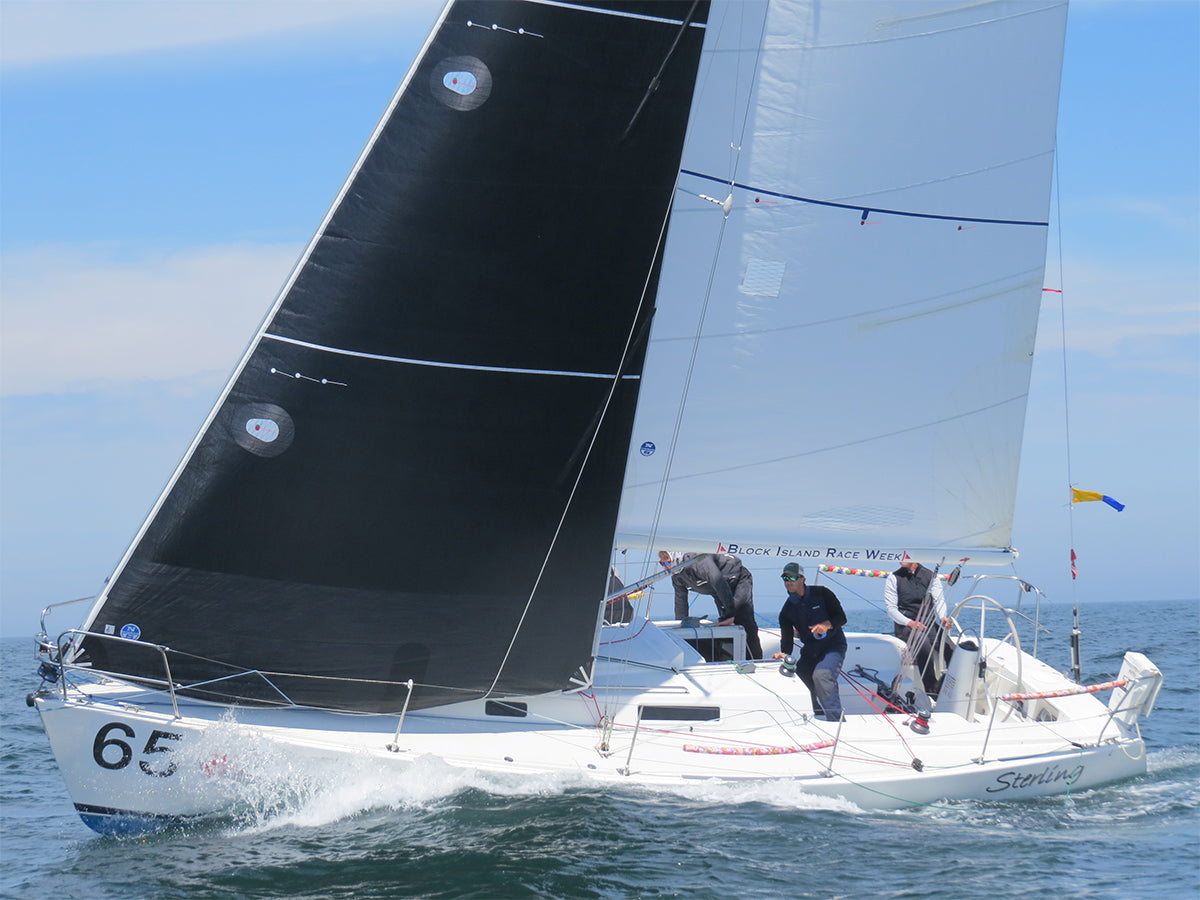
J/105 JIB WEIGHT RULE CHANGE: WHAT IT MEANS FOR YOU
J/105 JIB WEIGHT RULE CHANGE
What It Means For You
How does the J/105, a boat that was introduced in 1991, remain one of the strongest one design classes 28 years later? There are two answers: the sailing qualities of the boat itself, and the Class Association Rules.
The boat is simple to sail but complex enough to attract top sailors and crews. For a 34 ft boat, the J/105 is pretty affordable, especially when it is both an acceptable weekend cruiser and capable offshore platform. So it maintains a high resale value.
But the real success of the J/105 Class is a direct result of the conservative management of class rules, which includes a careful consideration of updates. We all balk at change, especially if we don’t know what the outcome of that change will be, but it is both natural and inevitable.
So, you ask, “How is this jib bag weight change going to affect me?” J/105 North specialist Will Keyworth one-word answer is….“positively!” This is a great rules update for all J/105 owners who actively race their boats, and class leaders drafted it only after requesting input from all the class sailmakers. “My view is that the result will be sails that are better, not just lighter.”
The result will be sails that are better, not just lighter. You don’t have to buy a new sail to comply with the rule, but the next sail you buy will be a better one.
You’ve probably already had discussions with other J/105 owners that start off with any of the following questions: Will a lighter sail last as long? How does this specifically affect the Light, Medium, and Heavy jibs? Do I have to buy a new sail now that the rule has changed? Will it cost more? All great questions, so let’s discuss them.
First, a bit of class history to explain how we got here. Since this rule was introduced in the mid 90s, class-legal jib materials have gotten much stronger: from woven Dacron, to Mylar film/Darcon laminates, to Kevlar laminate, and finally to Carbon laminates. Meanwhile, the Class minimum weight stayed the same. When Kevlar (and later carbon) became the material of choice, sailmakers had to add extra weight to the sails just to comply with the class bag weight. This weight was typically added by applying extra corner patching, especially in the tack; that bulk made it difficult to furl the sail tightly. So to answer “Will a lighter sail last as long?”, consider this: None of that “parasitic” weight did anything to improve durability or performance, and it actually made handling the sail harder.
How Does This Specifically Affect The Light, Medium, and Heavy Jibs?
The rule change from 23lb to 19.8lb represents a 14% reduction in bag weight, but even so an AP or Medium jib will have to be slightly over-built (with more load-bearing fibers than it needs) to comply. A Light jib will have to be significantly over-built, while the Heavy jib will end up at the correct weight without adding any extra fiber.
The new bag weight will enhance performance by reducing parasitic weight and improve handling, all without reducing durability.
Do I have To Buy a New Sail Now That The Rule Has Changed?
You don’t have to buy a new sail to comply with the rule, but the next sail you buy will be a better one.
Last But Not Least: Will It Cost More?
Since no expensive material (Carbon or Aramid) will be removed, my guess is that there will be no significant price change.
The bottom line is this: the new bag weight will enhance performance by reducing parasitic weight and improve handling, all without reducing durability. Better performing sails that are easier to handle and equally durable? That sounds like an improvement that will help keep the J/105 going strong, for at least another 28 years.
Is North Working on New Designs? When Can I Order the New Jibs?
Our designers are working on new jibs shapes for the J/105. A sail testing is planned for late summer. Sails can only be purchased with 2020 sail tags and are not legal until Jan 1, 2020. Advance purchase orders can be placed starting in November of 2019 for 2020 delivery.
READ MORE
READ MORE
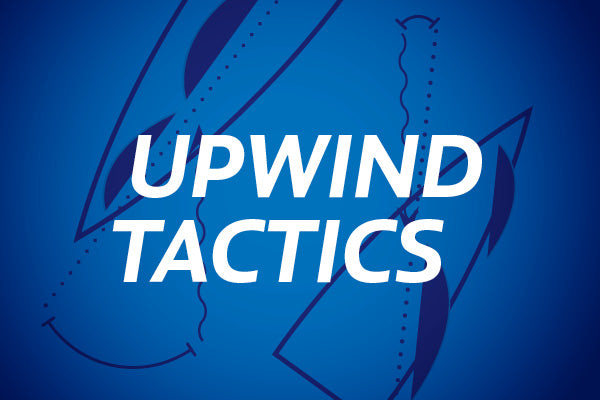
UPWIND TACTICS: ONE ON ONE
UPWIND TACTICS: ONE ON ONE
By Bill Gladstone
In this installment North U Director Bill Gladstone explores upwind tactics against a single boat as you approach the starboard tack layline.
Consider this scenario: We’re on starboard tack about five lengths below the starboard tack layline and about to cross a port tack rival by a boat length. The mark is still a fair distance ahead. No other boats are a concern.
What’s the Goal? Our position – one length ahead and owing one tack – essentially puts us even. Our first goal is to round ahead; a more ambitious goal is to round a few boat lengths ahead. Rounding a length or two ahead is rounding “under pressure” (but still better than being behind). Rounding a few lengths ahead would allow us to “sail our own boat” downwind without fear of an immediate threat.
What should we do? There are 4 options: Lee-Bow, Cross & Tack, Carry-On on starboard, or a Delayed Tack after sailing a few lengths. Let’s explore them all.
Fig 1: From Position 1, we have 4 Options
Option 1: Lee-Bow
A Lee-Bow tack under the port tack boat would allow us to give them bad air but given the short distance to the layline this play could leave us pinned – unable to tack until our rival tacks. This move might actually leave us behind. There must be a better choice. Opt 1 – Lee Bow
Opt 1 Fig 1: A Lee-Bow Tack to a short layline may leave us pinned.
NOTE: A Lee-Bow can be a great move IF if there’s enough distance that we will be able to push our rival back and be free to tack. In fact, this might be the first choice in that case. But not here; not with the short distance to the layline.
Option 2: Cross & Tack
We cross by a length and tack, leaving us to windward and bow to bow headed to the layline. With the Cross & Tack our rival is pinned and we get to make a safe layline call. We tack; our rival “hips up” and tacks; and we lead to the mark, rounding 1 to 2 lengths ahead. In the lead, but under pressure. If we were going to the finish, this would be just fine…
Opt 2 – Cross & Tack puts us in control and assures we’ll round ahead.
Option 3: Carry-On
Never mind the rival: Sail our boat. Rather than tack and make a long layline call let’s carry on. This is a passive approach that leaves us at the mercy of a small shift or puff. After we split and both boats tack we may hold our one boat length advantage, but we’ll be on port. Not strong…
Opt 3 – Carry-On is a passive approach (red)
Option 4: Delayed Tack
In this scenario we sail a few lengths – less than a “speed build”– and then tack.
Opt 4 – Delayed Tack puts our rival bow out so they are forced to make the next move. (blue)
Then what? Our rival will be bow out and first to the layline. When they tack on the layline we’ll tack on their lee-bow. Note that by extending less than a speed build before our tack we assure that our rival will not be back to full speed at our next meeting. Now we’ll be able to give them bad air all the way to the mark. In this way we’re able to turn a small advantage into a few boat lengths lead – hopefully enough so we won’t be “under pressure” but will be able to let us “sail our own boat” downwind.
Fig – Layline Lee-Bow lets us extend our lead (green)
That didn’t work out too well for our rival. What else could they do? An early tack would be a gift to us – as two extra tacks would hand us a comfortable lead. The other option would be to over-stand and wait for us to tack. That too is a gift, as each length they overstand gives us a length’s advantage (minus a small payback for their reaching angle after tacking).
Delayed Tack – Over Stand: When our rival over-stands we extend our lead. (Green extends. Blue sails more distance.)
Oops, NOT so fast…
Upon closer inspection I realized we were on the Yellow Boat, not the Red Boat. My bad. What to do?
When our rival executes a Delayed Tack we’re in a tough spot. Getting to the layline first leaves us two choices, neither good: tack on the layline and get crushed or over-stand and lose. How can we avoid the layline? As noted, two extra tacks is a gift to our rival. One option to explore is trading speed for height: Rather than race full speed to the layline we pinch up to close gauge with our rival.
How do we sail high and slow? Overtrim the main to force the boat up. Trim the jib a little too.
By sailing high rather than fast we can let them tack first, “hip up” and tack where we can stay close enough to put them “under pressure” when we round.
Fig – Pinch & Hip Up: We can trade speed for height(shown in blue), reduce separation, and hopefully round close enough to put our rival ‘under pressure.’ (green under pressure from blue)
Summary:
So, for a short hitch to the layline a Delayed Tack pays big dividends. For a longer hitch the lee-bow tack would be a strong choice. Also, for a tack to the finish a “Cross & Tack” would be sufficient – at the finish, a lead is a lead.
And for the bow out boat a trade of speed for height is the best play. (And the windward boat should do the same. Don’t tell him.)
Next Time:
We’ll turn downwind: trailing, but with our rival “under pressure.” ‘til then, sail fast.
READ MORE
READ MORE

CEDAR POINT ONE DESIGN REGATTA KICKS OFF SEASON
CEDAR POINT REGATTA KICKS OFF SEASON
Fast Sails And Regatta Support At Its Best
The Cedar Point One Design Regatta kicks off the sailing season in Connecticut. After a long winter, fifty teams competing in five different classes were avid to get on the water and have some quality racing time. Great sailing conditions with easterly winds on the light side 4-10 knots with strong currents on both days. A stellar organization by the CPYC volunteers members guaranteed the weekend fun.
North Sails provided daily pre-racing tips and weather debrief. One Design experts Allan Terhune, Zeke Horowitz, Brian Hayes and Jack Orr shared insights during the morning meetings while sailors grabbed some freshly brewed North coffee.
Here’s a quick summary of each class:
J/70
Very close racing for the top three boats going into the last day and last race. Oivind Loretzen’s NINE won the event with Joshua Goldman’s team Building A in second and Molly & John Baxter Team Vineyards Vines in third place. All top three boats powered by North Sails XCS-2 mainsail and J-6 jib.
Our J/70 experts Allan Terhune sailed on Building A: “Our goal was to sail the races as best we could. We were actually leading all three races, but could not hang on. It was a very competitive and fun regatta.”
North clients dominated the J/70 Class finishing 1,2,3,4,5*,7,8 . Top three boats used the XCS-2 Mainsail and the J-6 High Clew Jib.
Here’s Allan’s three takeaways from the regatta:
Rig Tune – Most folks knew to loosen the rig, but when they do this, they fail to pull on some backstay to help keep prebend in the rig and also keep the rig static. Building A was very fast upwind with this set up. It let the main be a little more draft aft and you could feel the boat accelerate quite well.
Crew Work – Crew work on the J/70 is key. You can tell teams that have sailed together for a while and those who have not. Our team struggled because we have not sailed together that much and we were not in perfect harmony on all the maneuvers.
Conditions Change From Day to Day – On Saturday the teams who went right did really well, due to current and pressure.This was discussed at the debrief on Sunday morning. On Sunday the left was pretty strong because the course was further out into the sound and the current was more even, putting emphasis on pressure and angle of wind more than current. Keeping options open and an open mind are key to venues like CPYC.
Beneteau 36.7
Alistair Duke with his crew on Frequent Flyer finished strong with four bullets in a row, to win the regatta. He struggled in the first race, but once he changed gears was the boat to beat. Alistair used a North Sails 3Di NORDAC mainsail and a 3DL Class Genoa. Lou Melillo and his Surface Tension team was a strong second using standard 3Di sails. Third place was Dave Schrader from Housatonic Boat Club. Learn more about Beneteau 36.7 sails >>
Clients on Frequent Flyer finished strong with four bullets in a row, to win the regatta. They used North Sails 3Di NORDAC mainsail.
J/88
Iris Vogel and her crew on Deviation held off Mike Bruno’s Wings to win the J-88 Class by one point. Third place was Kevin Marks with his team on Velocity. Mike and Kevin both use North OOD standard Class sails. Learn more about J/88 sails >>
J/109
Bill Sweetser’s Rush sailed consistently, placing in the top four every race, won the class and the trophy for winning the biggest class in the regatta. Emoticon skippered by Jonathan Rechschaffer, started the regatta with three bullets, but struggled to shift gears and had a couple bad races, moving them into second. Third place was Julia ODowd and her team on TBD with her best class finish to date. Julia is one of the original owners and has stuck with the class since 2006. Both Jonathan and Julia have North OOD class sails. Learn more about J/109 sails >>
J/105
The light air was very challenging for the J/105s. The 105 results were extremely tight with five boats within one point for first place, three of them all tied for first. The regatta title came down to the last race to determine the tiebreaker. Conundrum from Larchmont Yacht Club took the top spot, followed by Atraxis from Lloyd Harbor Yacht Club. Third place was Laura Bea, who traveled up from New Rochelle. Learn more about J/105 sails >>
J/70 expert Zeke Horowitz sharing his thoughts for the day
Saturday observations & Sunday Tips with Brian Hayes
READ MORE
READ MORE

KIWI TEAM WIN THE JJ GILTINAN TROPHY
KIWI TEAM WIN THE JJ GILTINAN TROPHY
The Kiwi 18-foot skiff team aboard Honda Marine showed their class by defending their title in style
📸 Suellen Davies /LiveSailDie
Skipper Dave McDiarmid, Brad Collins and North Sails expert Matt Steven won the prestigious event with a race to spare, showing the highly competitive Australians that their win in 2018 - the first victory by a Kiwi team in 44 years - was no fluke.
The Honda Marine team completed the regatta with a scoreline of five wins, two second placings and one fourth placing in the nine-race series. Two other Kiwi teams in the event also placed strongly, with Josh Porebski, Jack Simpson and Dave Hazard on ASCC finishing fourth overall, and C-Tech (Alex Vallings, Sam Trethaway and Matt Coutts) eighth out of 25 crews.
The Australian 18-foot skiff fleet was looking stronger than ever, with some past champions being brought out of retirement to try to wrest the trophy back from the Kiwis and some boats getting new rigs and sail wardrobes. However, Steven says the Honda Marine team went into the regatta well prepared, both physically and psychologically.
"We had a different mind-set this year, going in to defend the title. We knew that we would be targeted by the Australian teams, and that they would throw everything they could at us."
The boat also had two new North 3Di jibs as well as a new gennaker (to replace one stolen after last year’s competition), but the team continued to use the 3Di mainsail they won with in 2018.
"We used that same sail for all our training and the racing both years, which shows the durability of 3Di," says Steven. "We have done about 35 days’ sailing this season and it was still good enough for a big regatta like this."
This year’s regatta was sailed mostly in light conditions of 5–12 knots, with the skiffs sailing under their number one rigs. Steven says despite the Honda Marine team favouring slightly stronger winds and their number two rig, they had worked hard to optimise their bigger rig set-up, which paid dividends in Sydney.
"You always go over there not really knowing how fast you’re going. Because it’s a development class, you never know if the Australians have come up with something new to give them an advantage. But they didn’t know how fast we would be, either."
With victory — if not the actual JJ Giltinan Tropjy — in hand, debate has been reignited over whether Auckland could host the 2020 series.
"We really want to have the JJ regatta here," says Steven. "For the class to keep growing and progressing we believe it should be shared around."
READ MORE
READ MORE
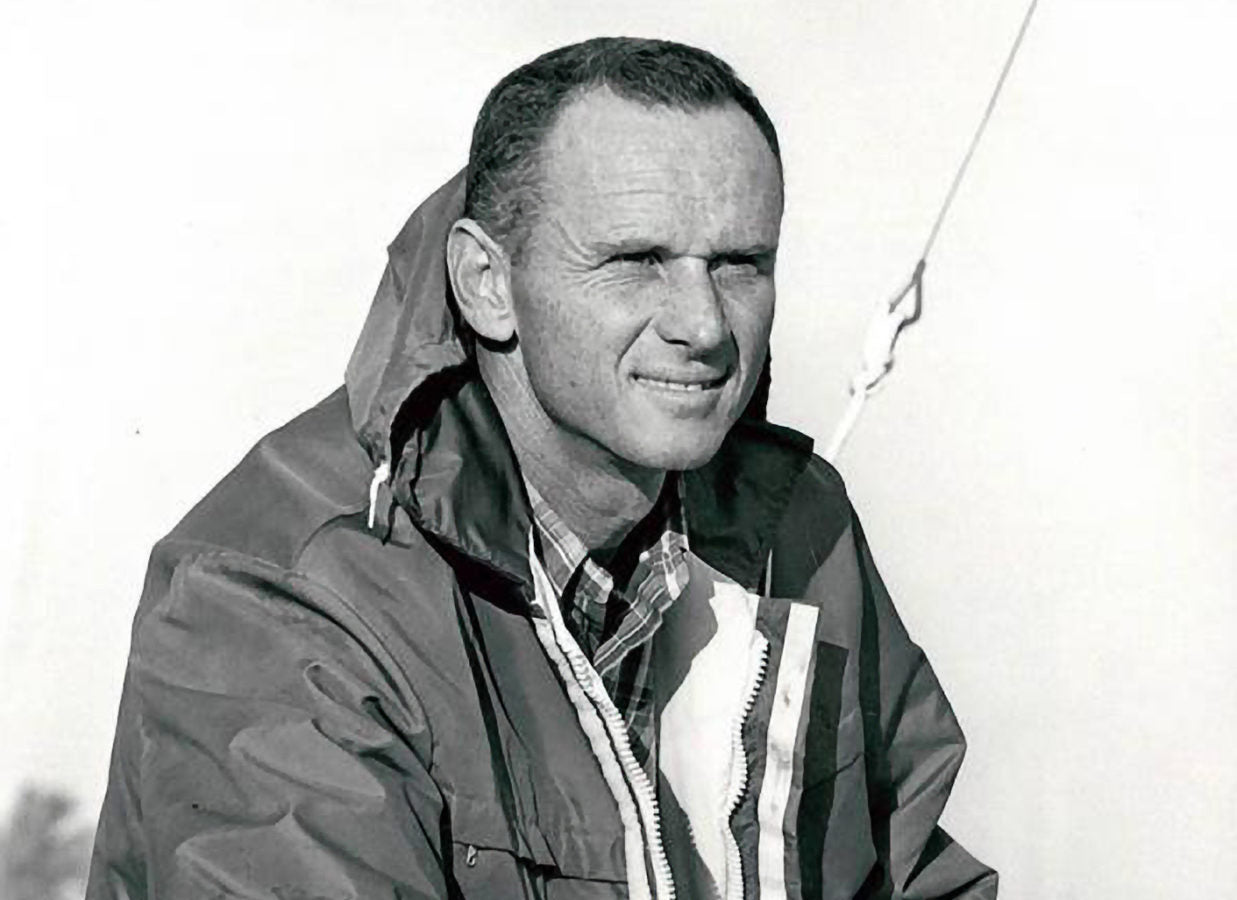
REMEMBERING LOWELL NORTH
REMEMBERING LOWELL NORTH
The Founder of North Sails Shaped Our Business and The Industry
Lowell North, the founder of North Sails, has passed away. Nicknamed “The Pope” by his peers, Lowell began his sailmaking career at the age of 14 when his father purchased a Star with cotton sails. The father and son team came in last in every race, motivating the young Lowell to recut the mainsail. The rest, as they say, is history.
“He pioneered new ways to make and shape sails. His clear purpose, creativity, and competitive spirit continue to drive North Sails today”
As an aeronautic/aerospace engineer, Lowell knew he could build a better sail through rigorous testing and incremental improvement. His methodical and scientific approach to sailmaking changed the industry forever, and it also helped him win five Star World Championship titles and a gold medal at the 1968 Olympics. The foundation laid by Lowell in 1957 has permanently shaped the North Sails culture.
“Lowell’s philosophy when building North Sails was simple,” explains North Technology Group CEO Tom Whidden. “Get the best people, who he called Tigers, and commit yourself to the science and technology of making the best product. He pioneered new ways to make and shape sails. His clear purpose, creativity, and competitive spirit continue to drive North Sails today—even as the company explores territories he never could have imagined.”
Lowell sold North Sails in 1984 and retired from sailmaking. He continued to sail, racing his boat Sleeper for many years, as well as cruising the Pacific. He passed away in San Diego at the age of 89, with his wife Bea by his side. He will be greatly missed.
READ MORE
READ MORE

MERMAID MUNSTER CHAMPIONSHIPS
MERMAID MUNSTER CHAMPIONSHIPS
North Clients Sweep All Three Podium Places
© Ted Kelly
North Sails would like to congratulate Darragh McCormack on his win at the Mermaid Munster Championships last weekend at Foynes Yacht Club, Ireland. Darragh dominated the racing by taking four straight bullets in the small but competitive fleet.
The top three boats were all fully powered by North Sails and it was great to see so many North Sails making their way into the class. Nigel Young, One Design Expert and founder of North Sails Ireland, was very happy to accept Darragh’s invitation to sail with him to have a look at the sails and offer any tuning tips. We talked to Nigel after the regatta:
”I was delighted to sail my first competitive “work outing” with my own son, Jack Young, as part of the crew. This was his first time bag launching the spinnaker and handling a regular spinnaker pole – he comes from the one string A-sail school of spinnakers! All in all, the Father and Son crewing duo could not slow Darragh down and he went on to take his fourth straight Munster tittle in the Mermaid Class with the picket fence score line as my American friends would say… 1,1,1,1!”
Congratulations to sail no.135 ‘Cara 2’ who finished in second place – Frankie Browne snr, Frankie Browne jnr and Brendan Dunne and to no.119 ‘Three Chevrons’ taking third – Vincent McCormack, Michael Lynch and Roisin McCormack.
Both Nigel and his son, Jack, look forward to their next Mermaid outing!
© Ted Kelly
© Ted Kelly
© Ted Kelly
© Ted Kelly
READ MORE
READ MORE

DICK PARKER: NORTH SAILS DESIGNER AND SALESMAN
DICK PARKER: NORTH SAILS DESIGNER AND SALESMAN
We checked in with him to learn about his new role supporting the local Grand Prix market
Dick Parker
Dick grew up in Hobart and lived in Sydney for 10 years, so "I’m pretty familiar with it." His English wife and two daughters, though, have had to adjust to "the spiders and snakes and all that." But now that they’ve been there six months, they’re making friends and settling in and "it’s starting to be pretty good." Dick first joined North Sails Sydney in 1987 and worked there for ten years, until European sailing adventures called. But he returned to the southern hemisphere during the off-season; "I’ve had a lot of summers and not that many winters, actually." In 2001 he joined the OneWorld America’s Cup challenge, and then worked with Emirates Team New Zealand from 2005-2007. He rejoined North Sails full-time in 2007, based out of the UK, and started a family. Last year, they decided it was the right time to return to Sydney full-time. In addition to carrying on his design work, Dick is helping the local sales team service the Grand Prix market. "They do a lot of sailing in Australia, especially Sydney. You can find yourself a boat race every day of the week pretty much." Most of his customers are racing offshore, and he says their year-round focus is the Sydney Hobart Race. "You talk to customers and it's all about the buildup for the Hobart, what we need to do, what sails and crew. It really is a big deal down here." His primary sailing is on TP52s. "They're just such awesome boats. I love sailing on them. They're just the right size, not too many people which is quite nice. I really enjoy sailing them so I try to do as much of that as I can." This winter, he’ll race the Fastnet and Middle Sea races in addition to local events and Hamilton Island Race Week. When talking with customers, Dick says he keeps his explanations technical. "I just try and work on the facts. Clients don't necessarily need to be talked in to anything, if you can explain well enough exactly what's required. I tend to look at things more pragmatically, and at the whole project. A customer may say, ‘look, you know I've only got a certain amount to spend on sails.’ So it's a matter of trying to work out how best to spend that money. Whatever the sum might be."
Dick's primary sailing is on TP52s
Steering clients toward what will provide the biggest benefit to their program is a fringe benefit of more personalised selling, he says. "A customer might say, ‘I need to buy a new J2 jib.’ And you might sit down and have a heartfelt conversation and work out that what he actually needs is a new J3 or a new spinnaker. Looking at the whole sailing program rather than just selling an individual sail is the way I like to work." On the design side, Dick is excited about Helix and its potential across a wide range of boats and markets. He’s also continuing to help build the library of sail shapes for Desman, part of the proprietary North Design Suite. "All the designers around the world now use that bit of software," he says. "It takes a lot of the grunt work out of design. North Sails has built so many sails now that the actual shape is actually the easy part. Getting the sizing right, the geometry right, is the most challenging - and the most enjoyable." Since he first started with North Sails in 1987, Dick says the biggest change is the company’s global unity. "It feels like a big multi-national company being run by some guys who know how to run a big company, as opposed to a small bunch of franchises being run by sailors. So, it's certainly a different beast that's for sure." The software and products are always improving too, he adds. "3DL, then 3Di - we certainly changed the industry." One thing that hasn’t changed? He still loves getting out on the floor. "I get quite involved with re-cuts, trying to get a bit more life out of an old tired sail, which is a big thing in Australia. They tend to run their sails for a lot longer than the Europeans, trying to get the most out of their product. They'll hang on to a sail for four or five years and keep re-cutting and improving it, so we do a lot more re-cutting of sails down here than Europe. I really enjoy that side of it. It's sort of a black art; get the stick out and fair it up and see how it looks." Currently Dick’s work week is divided between global design work, Australian design work, and helping out with various projects. "I can design from pretty much anywhere really, because the company is so global." Once he wraps up a few projects, he plans to do more to support the local sales staff. "They have so many customers that it's hard to service them all." When he’s not working, Dick goes sailing on an NS14, which he describes as a small Taser. "Rotating ring, no spinnaker. I'm going to start sailing that with my girls as well." His two daughters have been learning to sail at the Avalon Sailing Club and will move into Manly Juniors next season. He also enjoys taking the family out on a small motorboat, "swimming and hanging out with the kids." Looking ahead, Dick’s excited about the future. "Certainly 3Di has a massive advantage over the competition. Delamination of string sails is just such a common problem when you get into the warmer climates, Asia and Australia, the sails just don't last. 3Di gives great value for customers; ultimately you just get so much more life out a 3Di sail verses a string sail, that is a real mantra down here for sure." When asked about any regatta wins he was particularly proud of, Dick has to stop and think. "With this line of work, all your goals seem to be your customer's goals, not necessarily yours. I haven't won Hobart, haven't won Fastnet, haven't won the Middle Sea Race. So there's a lot to do, still."
READ MORE
READ MORE

NORTH U
NORTH U
Termin ATTERSEE, 28. - 30. Juni 2019
North U 2019 / Schörfling auf Lago 26 oder eigenen Booten
Inhalte
Jeder Segler/in möchte gerne das Potential von Schiff und seiner Mannschaft ausschöpfen und erfolgreich segeln, sich weiterentwickeln und bei Regatten im besten Fall gewinnen. Segeln ist ein komplexes Unterfangen und Regattasegeln noch mehr: Trimm, Taktik, Boat Speed, Steuern, Regeln, Bootshandling, Crewarbeit... aber bekanntlich ist eine gute Bootsgeschwindigkeit ein wesentlicher Schlüssel zum Erfolg.
Nicht immer sind dafür neue Segel notwendig, meistens gehören sie nur richtig eingestellt!
Daher bieten wir ihnen die Möglichkeit mit Wissen und Praxis ihr Schiff und ihre Segel optimal einzustellen und das Erlernte sofort umzusetzen. Der Schwerpunkt der North Sails University liegt auf dem Segeltrimm. Fragen, Wünsche und "Problemzonen" jedes einzelnen Teilnehmers werden vorab besprochen und der Fokus bei den Segelaufnahmen danach ausgerichtet. Das neue und aufgefrischte Wissen über seine eigenen Segel und den eigenen Trimm ist sicher für die gesamte Segelsaison äußerst nützlich!
Ablauf
Ein strukturiertes, auf die individuellen Bedürfnisse und Wünsche der Teilnehmer abgestimmtes Programm – wobei wir Sie eine Runde um einen abgesteckten Kurs begleiten - hält die Balance zwischen theoretischem Input, eigener Umsetzung und direktem Feedback am Wasser. Das am Freitag im Vortrag erlernte Trimmwissen wird bei den Wassereinheiten Samstag und Sonntag in der Praxis angewandt. Die professionelle Dokumentation der schnellen Boote mit Hilfe von Fotos und Videos - sowie die Herausarbeitung der Unterschiede zu den weniger schnellen - erfolgt an beiden Tagen nach der Wasserarbeit im Rahmen eines Debriefing.
Freitag, 28. Juni um 18:00
Begrüßung und Überblick zur North Sails University mit Einführungsvortrag über Segeltrimm vom Trainerteam
Aufnahme individueller Schwerpunkte der einzelnen Teilnehmer
Samstag, 29. Juni 9:00-18:00 & Sonntag, 30. Juni, 9:00- 17.00
Theorie Einheit(en) und Beobachtung am Wasser mit direktem Feedback
Debrief mit Foto- und Videoanalyse im Anschluss an die Wasserarbeit
Teilnahmebeitrag
€ 595,00 .-inkl Ust. pro Teilnehmer auf LAGO 26
€ 495,00 .-inkl Ust. pro Teilnehmer mit eigenem Schiff
€ 395,00 .-inkl. Ust. pro Crewmitglied
Für North Sails Kunden bieten wir einen 10% Kundenrabatt an!
Ort
Motor Yacht Club Salzkammergut
Bahnhofstrasse. 19
Schörfling
Liegeplätze werden im Rahmen der Veranstaltung zur Verfügung gestellt
Bei weniger als 10 angemeldeten Personen können wir die Veranstaltung leider nicht durchführen - wir bitten um Verständnis.
North Sails U.
Die North Sails U. wurde 1980 in den USA gegründet mit den klaren Zielen:
Segler zu Regattaseglern und Regattasegler zu Siegern zu entwickeln.
Sind sie in Österreich mit dem gleichen Zielen dabei und kontaktieren sie unser Trainerteam und melden sie sich an!
Ihr Trainerteam:
Hans Spitzauer
Geschäftsführer North Sails Austria, Segelprofi, 5-facher Olympiateilnehmer, Weltmeister und Europameister
hans.spitzauer@northsails.com
+43 664 546 87 69
Andrea Seidl
Geschäftsführerin North Sails Austria & Seidl Sails GmbH, Tuch- & Design Spezialistin, Segelmacherin und seit 35 Jahren aktiv am Wasser.
andrea.seidl@northsails.com
+43 664 9515353
Anmeldung bis zum 24. Juni unter office.at@northsails.com
Für Fragen zu Ablauf, Inhalt und Schwerpunkten stehen wir gerne auch persönlich im Vorfeld zu ihrer Verfügung.
READ MORE
READ MORE

Consejo North Sails
CONSEJO NORTH SAILS
¿Qué es un código cero?
Lo que comenzó como un concepto sencillo pero innovador ha evolucionado a toda una nueva categoría de velas. Todos los código cero tienen en común que son velas principalmente asimétricas, rápidas, planas y diseñadas para ángulos de través cerrado.
Originalmente, los código cero fueron diseñados para calificar como spinnaker bajo ciertas reglas de rating, lo que requería que la cadena media debía medir como mínimo el 75% del pujamen. Los código cero aportan superficie vélica y potencia a rumbos de través cerrados, y benefician especialmente a barcos con velas de proa no solapadas, ya que cubren de manera óptima el salto entre velas de proa de ceñida y spinnakers simétricos o asimétricos. A la hora de elegir un código cero, es importante considerar las prestaciones de nuestro barco, ángulos de viento objetivo, intensidades de viento más habituales, sistemas de manejo de velas, y elegir el material más apropiado para que la vela pueda ser personalizada para nuestras necesidades.
READ MORE
READ MORE
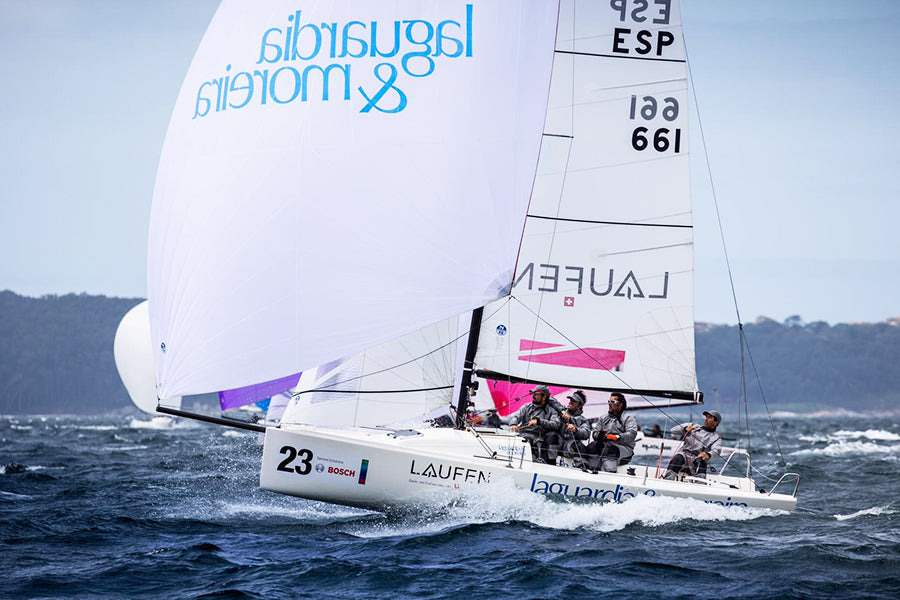
ÉXITO TAMBIÉN EN J70
La nueva mayor F1 de J70 comienza a cosechar sus primeros éxitos.
READ MORE
READ MORE

COPA DE ESPAÑA DE OPTIMIST
COPA DE ESPAÑA DE OPTIMIST
Nuestros clientes más jóvenes continúan dándonos alegrías en formato monotipo.
📸 Pep Portas
En esta ocasión, las buenas noticias llegan desde la Copa de España de Optimist 2019, celebrada en Puerto Sherry los días 15 a 18 de mayo. La regatista balear –y doble campeona del mundo– María Perelló eligió velas North Sails para imponerse en categoría sub 16 entre una flota de 149 barcos de 11 comunidades autónomas. También equipó North Sails el tercer clasificado absoluto, el canario Javier Ojeda.
¡Muchas felicidades a ambos! Y gracias a todos los que confiáis en North Sails.
READ MORE
READ MORE

EUROPEO DE 470
EUROPEO DE 470
El campeonato de Europa de 470 se celebró en la localidad italiana de San Remo (6-14 de mayo), donde los mejores expertos continentales se enfrentaron por las coronas masculina y femenina.
📸 Gerolamo Acquarone
North Sails equipó al 80% de la flota, incluyendo a los ganadores de ambas categorías: las francesas Camille Lecointre / Aloise Retornaz y los suecos Anton Dahlberg / Frederik Bergström. Segundos en categoría masculina finalizaron los españoles Jordi Xammar y Nicolás Rodríguez, también equipados con North Sails.
¡Felicidades!
READ MORE
READ MORE
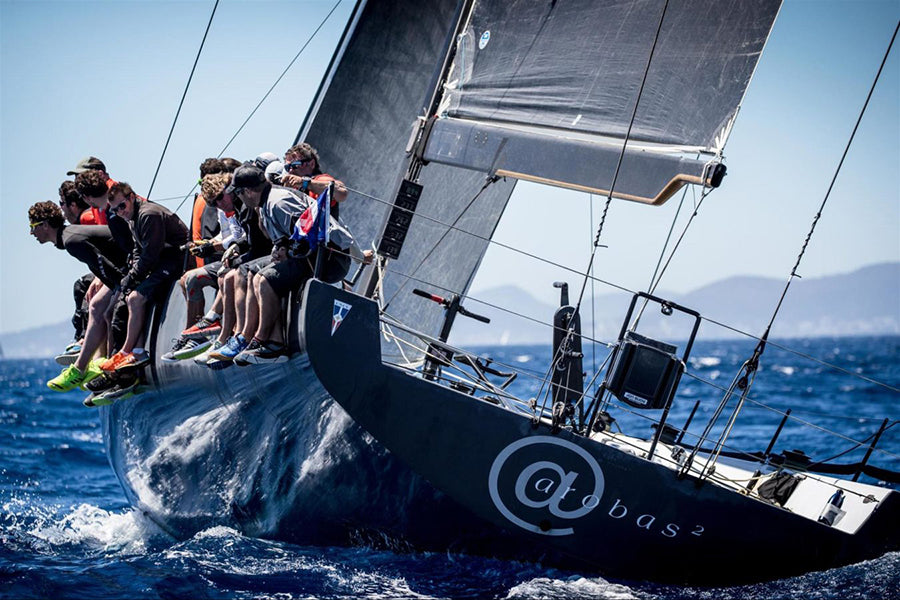
NORTH SAILS TRIUNFA EN PALMA
Barcos equipados con velas North Sails se impusieron en seis de las clases participantes.
READ MORE
READ MORE
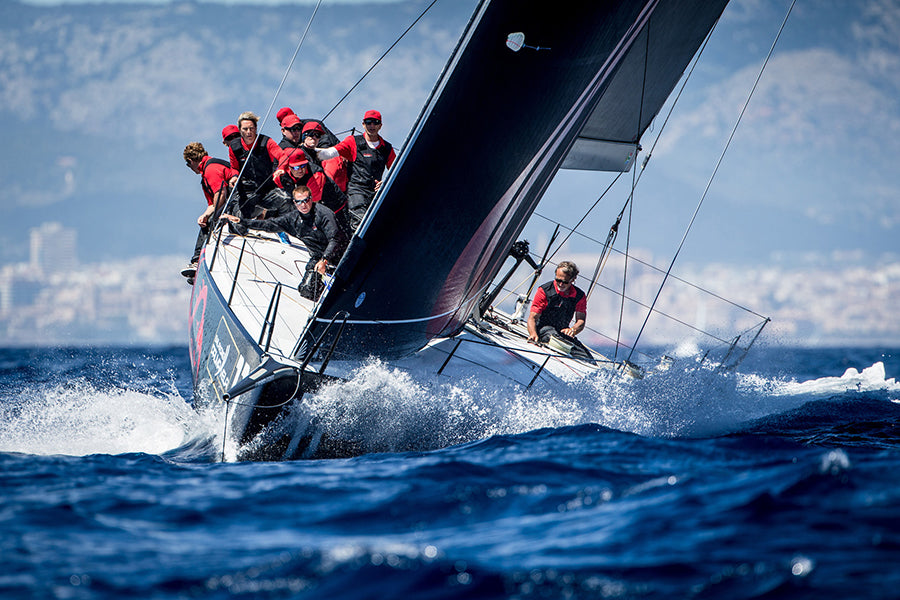
¿CUÁL ES EL MEJOR MOMENTO PARA COMPRAR VELAS NUEVAS?
¿CUÁL ES EL MEJOR MOMENTO PARA COMPRAR VELAS NUEVAS?
La mayor capacidad de producción de las velerías North Sails permite ofrecer tarifas especiales para velas entregadas durante verano.
"Si quieres estrenar velas en la Copa del Rey MAPFRE, el momento para adquirirlas es ahora", sugiere Luís Martínez Doreste, director comercial de North Sails España.
Ante la inminencia del verano, el movimiento en los pantalanes se multiplica. Meteorología y aumento de horas de luz invitan a salir a navegar, y los clubes náuticos agitan sus calendarios con interesantes regatas por toda la costa española. Además de la puesta a punto necesaria para garantizar que disfrutemos al máximo de nuestro barco, conviene revisar el inventario de velas y decidir si necesitamos algún recambio. Pero, ¿es un buen momento para comprar velas nuevas?
"Ahora es un momento excelente para comprar velas nuevas", explica Luis Martínez Doreste, director comercial de North Sails. "El precio de venta al público de las velas North Sails está calculado para picos de producción, cuando nuestras velerías trabajan a pleno rendimiento, pero cuando disponen de mayor capacidad de producción podemos ofrecer interesantes descuentos". Y es precisamente ahora cuando se dan las circunstancias para que la firma pueda ofrecer velas nuevas en condiciones especiales.
Tomando como referencia una regata emblemática como la Copa del Rey MAPFRE, Martínez Doreste recomienda aprovechar esta temporada de descuentos y realizar el pedido cuanto antes: "Contando con que la regata se celebra del 27 de julio al 3 de agosto, quien quiera estrenar velas debería encargarlas ahora. Para pedidos realizados a principios de junio, garantizamos entrega antes de la Copa del Rey MAPFRE".
Martínez Doreste, campeón de la regata del Real Club Náutico de Palma en 2018 con el DK46 Estrella Damm en clase ORC, apunta a una vela que no debería faltar en el inventario de todo barco que busque brillar en la Copa del Rey: la nueva Helix. "El código cero al 75% Helix es una vela imprescindible para la regata costera de la Copa del Rey, porque suele navegarse en rumbos cerrados en los que esta vela se comporta de forma óptima", explica. Helix es la propuesta de North Sails de vela de proa sin cabo antitorsión, caracterizada por una óptima distribución de cargas y una ligereza sin precedentes. Está disponible para embarcaciones de prácticamente cualquier eslora.
El programa North Sails de condiciones especiales por producción es aplicable a velas entregadas en los meses de julio, agosto y septiembre.
READ MORE
READ MORE

HELIX AND THE FIGARO 3
HELIX SAILS AND THE BENETEAU FIGARO 3
A Specialized Sail Structure, Helix Is Part of the North Sails Recommended Inventory For This Foiling Offshore Class
Spend a day in a North Sails offices and lofts and you’ll quickly observe Helix sails are a hot topic. Who’s taking delivery this week, how are they performing, are the clients happy? Our sail design team is constantly looking at photos and video of sail shape, while our sales team is fielding inquiries from current and potential clients looking to step up their performance.
In the last few weeks, Supermaxi Scallywag won their class and broke a record at Les Voiles St Barth, Wally Centro Magic Carpet 3 took delivery of their new Helix sail before Palma Vela, Cao Ila R won the Mini Maxi division at Capri Sailing Week, and the feedback on Helix sails from the Beneteau Figaro 3 class is coming in fast and furious.
“The data is coming in after a few months, and the Helix sails have less sag, less load and are faster on every angle than the competition,” North Head of R&D Gautier Sargent explains. “The results from the Figaro 3 are proof that the performance gains we advertise are real.”
Helix sails are a specialized sail structure evolved from Load Sharing Technology, and are part of the North Sails recommended inventory for this foiling offshore one-design class. These sails are more versatile, forward projecting and self-supporting, featuring a luff cord to fine tune the luff shape.
“Helix gives us the ability to adjust the flying shape to the conditions and point of sailing. Also, the loads required to control your sag are reduced and the overall bagged weight is light.”
Armel Le Cléac’h, Skipper Banque Populaire Figaro 3
The North design team is 80 people strong and is a powerful collection of very talented design experts with an excellent track record of developing new concepts.
“Designers at North Sails are committed to understanding the why,” Gautier says. “Paired with our obsession to deliver the best product, this has brought people back to ask about Helix. At North Sails, we look at the long game and incorporate all factors (material, design, ease of use) into our product offering.”
Though it wasn’t a popular decision initially, Gautier stands by the North Sails approach of building a handful of identical Helix sail prototypes for the Figaro 3 fleet. This setting of a baseline is similar to how North Sails handles the IMOCA, Melges 20 and J/70 classes, and it gives teams the opportunity to test the sail at different regattas, with all factors being equal.:
“Helix is a good fit for the solo Figaro 3 because it is very versatile and covers a huge range of conditions and wind angles. You can easily switch from reaching to a downwind sail.
Morgan Lagraviere, Skipper Safran IMOCA
“We lost a few guys at the beginning because they wanted custom sails, but building the best sail we could for this class, and offering it to everyone was what we did,” explains Gautier. “We want our clients to feel special, but we don’t like to play favorites. If everyone is the same when learning the boat, you understand whether you are faster because of different trimming, a different setting on the foil, or maybe different sail configurations.”
© Alexis Courcoux
READ MORE
READ MORE
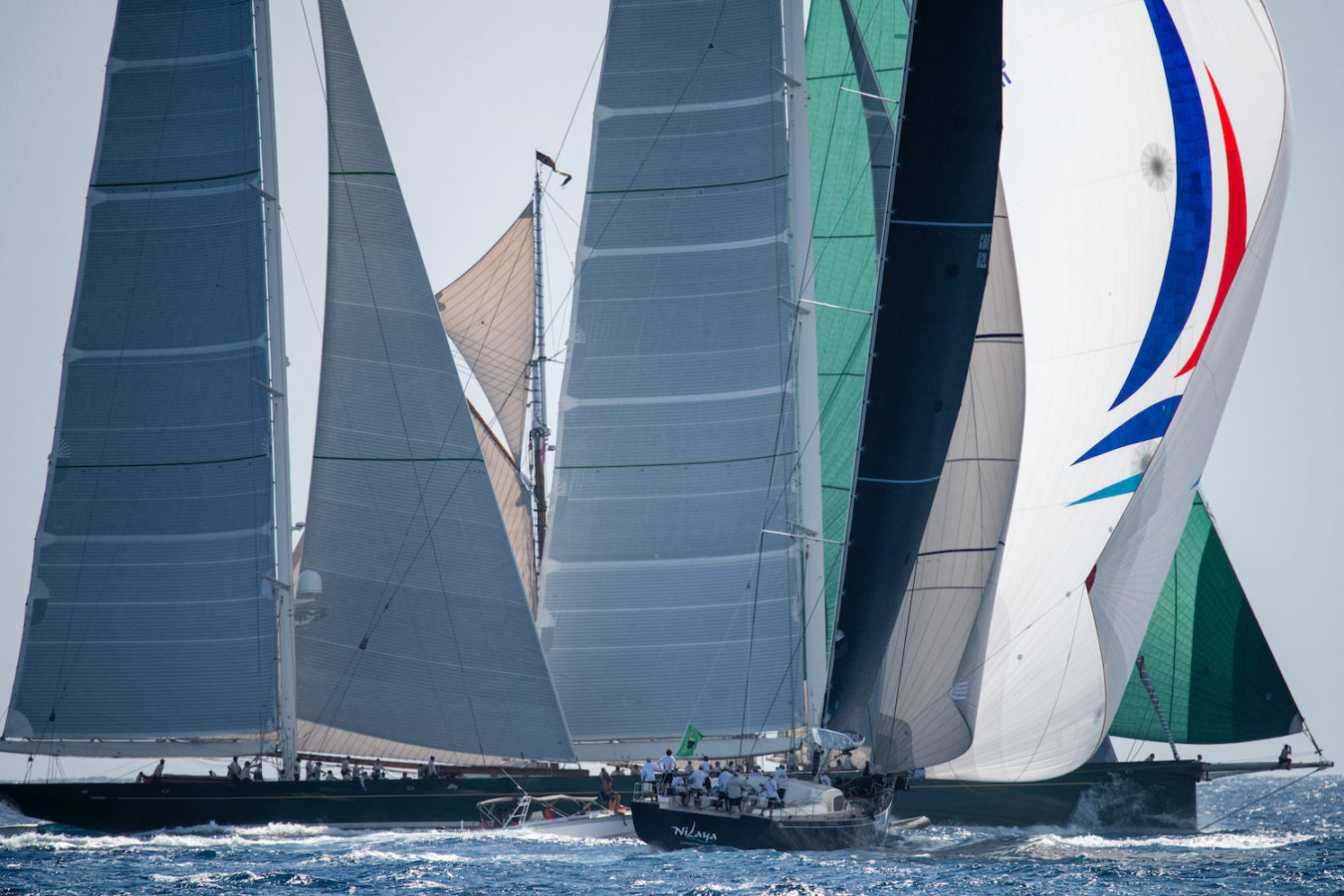
SUPERYACHT TIMES INTERVIEW WITH KEN READ
SUPERYACHT TIMES INTERVIEW WITH KEN READ
This article has been republished from the May/June issue 26 of Superyacht Times, author Charl van Rooy. Talking superyacht racing with sailing legend Ken Read.
Heading Downwind
From a humble sail-making background in his hometown of Newport to the world stage as one of the most celebrated sailors of our time, there are few people who deserve a shorter introduction than Ken Read. As a globally recognised face from three America’s Cup campaigns and tearing up the world’s oceans during as many Volvo Ocean Races, Read’s experience in the field is second to none. I met up with the man himself during the recent St Barths Bucket to find out how a lifetime of competitive sailing and gruelling ocean races makes him one of the most valuable and trusted ambassadors for the super sailing yacht business today.
The Rest Is History
As President of North Sails, one of the world’s largest sail suppliers to super sailors, Read is no stranger to the glamorous side of the business, regularly attending some of the most prestigious events on the yachting calendar. But he is not simply here on the jet set Caribbean island to represent the North Sails name and sip champagne. Read is on a lifelong mission to ensure the longevity of the sailing superyacht business and actively throws himself into the superyacht sailing lifestyle as enthusiastically as he did during his competitive career. ‘“What can we do to change the ratio of motor yachts to sailing yachts in your publication?” he asks me as he scans through the latest motor yacht-rich issue of the SuperYacht Times newspaper. Sailing is Read’s life. From being drafted by a sailmaker after excelling at sailing in college, to being awarded the US Rolex Yachtsman of the Year trophy twice and later selling his own sailmaking company to North Sails at the age of 35, “It’s been one hell of a ride,” he says.
Read’s involvement in the superyacht sailing scene kicked off in 1996 when North Sails acquired the Sobstad Sails (previously Shore Sails) company he owned. “With that, I stepped onto the company board and started this incredible process of using high-profile sailing events to learn about building a team, managing expectations and to communicate with these highly intelligent, wealthy owners to further develop our product and make sure we offer the best that we can.”
Higher Grounds
Joining the company wasn’t the end of Read’s sailing career. Instead, under the mentorship of his boss, Tom Whidden, Ken received the guidance and he needed to eventually reach the highest level of professional sailing. No less than four sabbaticals during his time at North made it possible for Read to compete on the global stage in some of the most memorable races of his life.
“I remember Tom telling me, ‘I’m going to keep pushing you out the door to go and get better and improve your name on the world stage. Go out and make the mistakes you need to, and you will return a better manager of North Sails’,” Ken smiles. “If you look at it from a business perspective, going off to take part in the Volvo Ocean Race or America’s Cup, many of the people I would normally deal with are a part of those races anyway. So you end up with real friendships and partnerships that you can utilise in the future.” And that is exactly what Read has achieved as preparations for the 14th Volvo Ocean Race later this year are underway. “Today I enjoy having taken on the role as a supplier to many of the teams and being able to bring some of my experience to the table when they ask for it.”
Back on the superyacht racing scene, Read views these prestigious super sailing yacht gatherings as more important than ever. “Today, the boats are evolving into even higher performance, sportier superyachts which suit our field of expertise and skill sets perfectly. Our 3Di sails, in particular, are designed specifically for these types of yachts and the type of racing we see here in St Barths. These events make or break our year, really, and directly impacts our bottom line.”
Bigger Is Best
During his time attending superyacht regattas, Read has found that to ensure the success of these events and, indeed, the continued success of the sailing yacht industry as a whole, more needs to be done to provide an inclusive experience. Regattas are often associated with performance maxis and intense racing scenes, but often overlooks the vital role bigger, slower yachts in the Corinthian class plays in the overall perception of the industry. “The important part of performance superyacht sailing events such as here in St Barths and the Superyacht Cup in Palma, for example, is that different classes are offered for the different styles of sailing. You can have a very relaxed Corinthian style class that is as big and carries just as much weight as the performance boats that are fully crewed. For a few years, the scene seemed to lean too much towards a ‘performance-only’ experience.”
“I think we can do a better job of promoting the Corinthian side of these regattas; it can’t only stand out to the cool, fast boats. We need equal representation in the press and on the podium for all classes. Sailing a big Perini that is larger than a house is a hard thing to do. I won’t call it a performance boat, but it is operated and pushed to a performance level in a cruising class. Without those types of boats, these events will not be the same.”
Helping Hands
Looking to what can be done to prevent these large yachts from dropping out of regattas due to a technical issue with their sails, Read continues: “Early on we found that this is one of the most disappointing things that can happen to an owner during these events. Whether it is our sails or another manufacturer’s, we need owners out on the water, participating and having fun. We started our regatta service some years ago, and a technical team is on site to make any repairs to the sails if needed. It’s not a money maker for us – it probably costs us money each year,” he laughs, “but it is something we feel we have to do to ensure that these events continue and that owners leave happy.”
Looking Up
Increased participation in increasingly sophisticated, inclusive sailing events and regattas around the world is great, but with inconsistent trends in the sailing yacht market – is it enough to rejuvenate the super sailing yacht business? “I think we have already noticed a slight shift. Many owners are involved in environmental projects today, and many are looking to make a change on the global stage and considering sailing yachts as an alternative for their superyacht experience. In the last ten years there is more interest in big sailing yachts than I have ever experienced before. Even on the semi-production side of the business, companies like Baltic, Swan and Southern Wind are talking about projects of 100-130 feet in length. People are asking about these projects. That is a great part of the market which didn’t exist a few years ago. I think we are seeing a good comeback with good energy.”
Home Stretch
Business aside, with so many years working – and playing – in the world of sailing, does Read still indulge in the sport for fun?? “Back home I do sail for fun, yes,” he chuckles. “I had an M32 catamaran for a number of years, and we sailed Tuesday night beer can series. I am also sailing in the 12 Metre World Championships this summer in Newport. I’ve been racing with the J’s for a long time on Hanuman and will probably continue in the J Class format in some form in the future as well.”
And that is precisely where Read’s focus is now firmly set on; the future. Having denied considering taking part in another Volvo Ocean Race, his feet will stay on dry land – at least for now. “My focus now will be the running of North Sails. As long as I can remember I’ve been here in St Barths out on the water sailing as either a helmsman or tactician. I have to say, it’s weird getting up in the morning and not having to figure out how to beat someone on the race course. But it’s still a lot of fun for me, and I think it perhaps paves the way for the next direction of my life.”
📸 Carlo Borlenghi
READ MORE
READ MORE
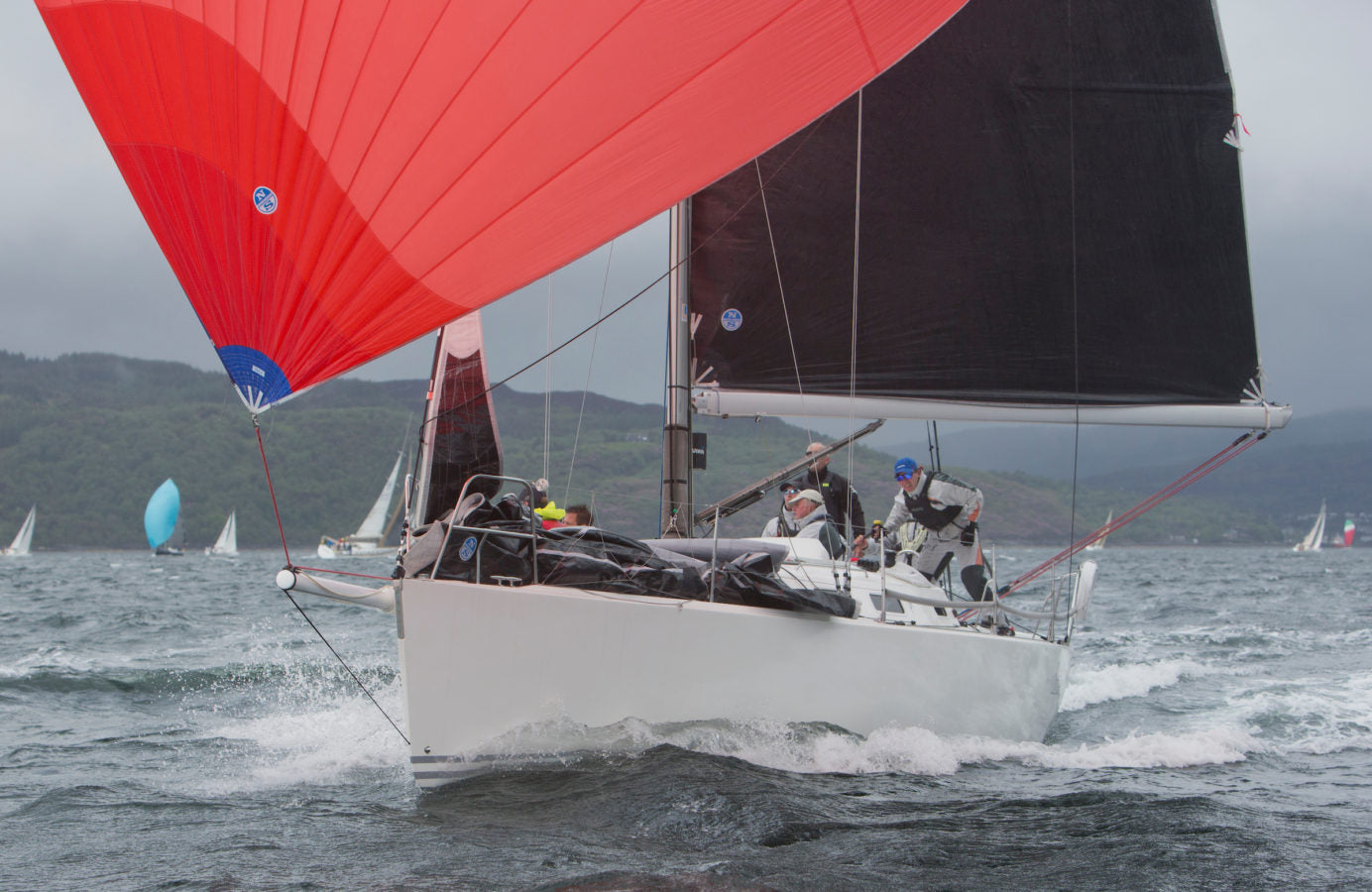
SCOTTISH SERIES SUCCESS IN TARBERT
SCOTTISH SERIES SUCCESS IN TARBERT
North Boats Take Top Position In Five Classes
Chimaera, overall series winner © Marc Turner
The 2019 Scottish Series was a great success all round, with North Sails clients taking the overall Class Win in five of the classes and the "Boat of the Week" prize for Andrew Craig and his Team on the J-109 Chimaera. Our own Maurice O'Connell was calling tactics on board, managing to navigate his way through a tricky six race RC 35 series to win by a very comfortable eight point margin. Well done to the crew for a fantastic result in a very tough 14 boat fleet. Andrew sent us this lovely note as soon as the regatta had finished:
"We had the full range of conditions and our new North 3Di J1 and J2 set beautifully on the light moderate days. The J3 came into its own in day three in 18 to 28 knots. We have a beautiful A2 SuperKote for very deep running and could get lower and faster than all the other A sail boats. Our big A4 was used in the heavier winds. It was great to have Prof with us and we kept working the sail and boat trim. It was a real nine man team effort with our North wardrobe as a great tenth man!"
''We have a beautiful A2 SuperKote for very deep running and could get lower and faster than all the other A sail boats''.
The full North Sails Ireland squad was in attendance at the regatta as well as Kevin Aitken from North Sails Scotland sailing the very rapid Beneteau 36.7, Animal. Powered by 3Di, Animal was the overall winner of the Kip Regatta the previous week, but on this occasion, the winds were just too strong for Kevin and his team to shine.
Mata, IRL2794 © Marc Turner
We talked to One Design Expert and founder of North Sails Ireland, Nigel Young who was on trim and rig setup on board Harmony:
What was really evident as soon as we hit the water on Friday morning was the impressive number of North Sails powered boats at the regatta. 3Di is really proving to be the product of choice if you want a taste of success... performance and longevity are hard things to ignore.
3Di is really proving to be the product of choice if you want a taste of success... performance and longevity are hard things to ignore.
In a smaller-than-normal Class One, it was Jay Coville's First 40, Forty Licks, that took the top prize with Jonathan Anderson's J-122e El Gran Senor following just two points behind after a continuous battle between these two teams throughout the weekend. The beautiful Corby 37 Aurora finished a very close third. I have very fond memories of a Scottish Series win in 2007 on that boat when she was named Blondie and owned by Eamon Rohan. It is fantastic to see her still going strong and in great hands.
The RC 35 Class was perhaps the toughest class this year, with 14 boats fresh from Kip Regatta all looking for the top prize in a very narrow rating band. As previously mentioned, it was the J-109 Chimaera taking top place by a comfy margin, followed by the Ker32 Hijacker. This is an example of another boat powered by North Sails, sailing with some relatively old 3Di sails, proving that high quality race sails can last. The Kelly Family were third sailing their J-109 Storm completing the 1,2,3 podium places for North Sails clients - congratulations to all!
A battle between Harmony and Mata took place in Class Three; both Half Tonner's from Howth Yacht Club sailing with North Sails 3Di. With J-92's making up the bulk of the fleet, Harmony came out on top by a small margin, proving how competitive the smaller classes can be. Congratulations to Darren and Michael Wright for putting together such a nice boat and for a great performance on their first outing.
The 2019 Scottish Series will be remembered for some great races, lots of rain, some hanging about waiting to sail and big breeze Sunday. Congratulations again to all the North clients who did so well at this regatta, it makes us very proud to see the blue badge at the front of the fleet.
Scottish Series 2019
IRC 1
1st
Forty Licks / Jay Colville
2nd
El Gran Senor / Jonathon Anderson
RC 35
1st
Chimaera / Andrew Craig
2nd
Hijacker / Stuart Cranston & Jane Buchanan
3rd
Storm / Pat Kelly
IRC 3
1st
Harmony / John Swan
2nd
Mata / Darren & Michael Wright
3rd
Satisfaction / Nicholas Marshall
Etchells
1st
Hero / Geoffrey Howison
Sigma 33
1st*
Leaky Roof 2 / Harper and Robertson
* Denotes Partial North Sails Inventory
Hero, 1175 and Excaliber, IRL953 © Marc Turner
Moonstruck Too, GBR4757R © Marc Turner
READ MORE
READ MORE
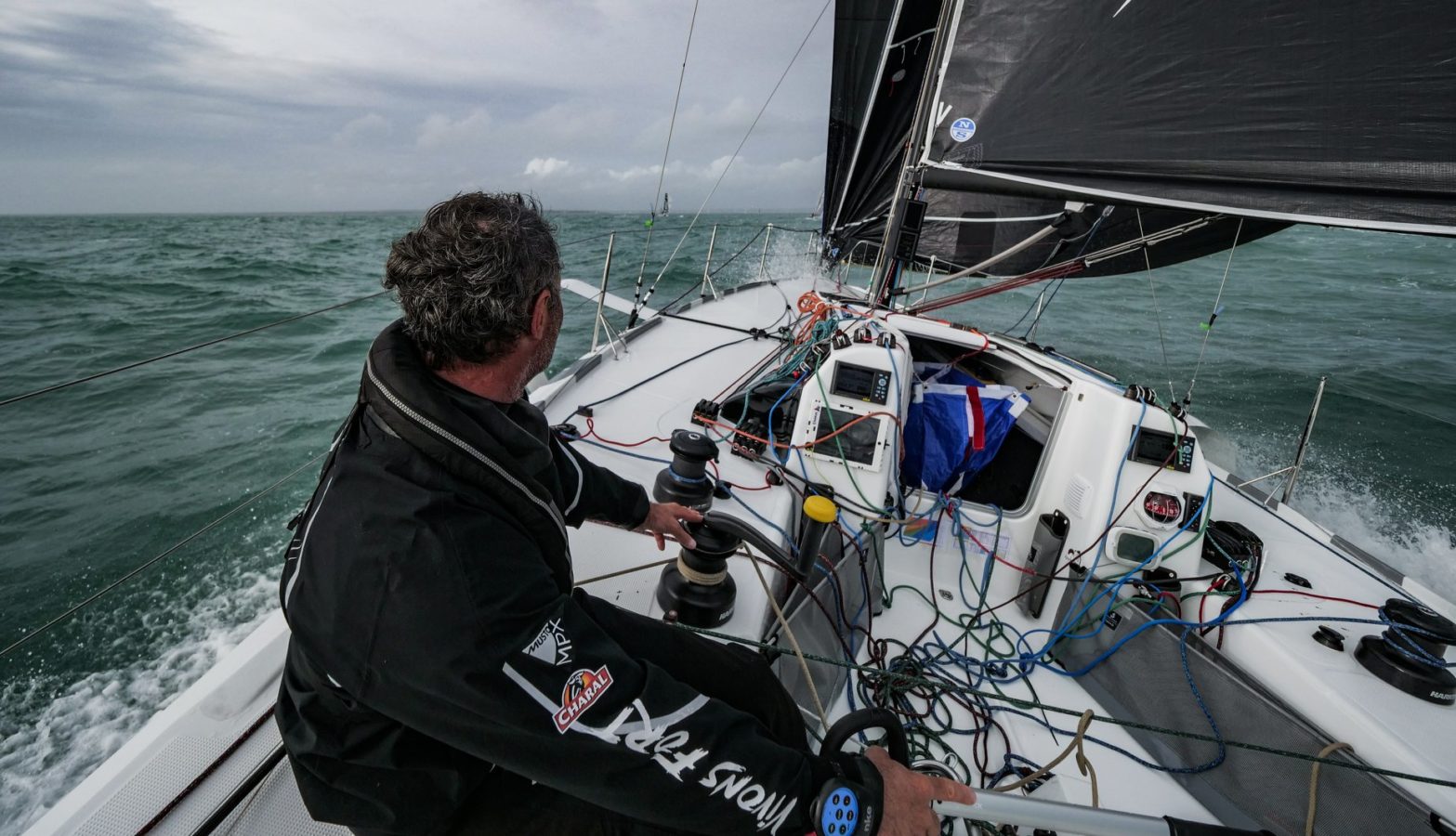
LA SOLITAIRE PASSE À L'AIR DU FOIL ET DU 3Di
LA SOLITAIRE PASSE À L’AIR DU FOIL ET DU 3Di
47 skippers à bord de leur tout nouveau Figaro Bénéteau 3 sur la ligne de départ
© The Solitaire URGO Le Figaro
L’épreuve maîtresse des Figaristes pour cette saison 2019 approche à grands pas. La Solitaire – Urgo Le Figaro sera lancée dimanche 2 juin à Nantes, destination Kinsale en Irlande pour la première étape, puis direction Roscoff et Dieppe en France pour les trois étapes suivantes. 47 skippers à bord de leur nouveau Figaro Bénéteau 3 à foil dont un tiers est équipé de voiles North Sails seront dans les starting blocks pour espérer décrocher la victoire de cette 50e édition. Evénement phare de la course au large en France, la Solitaire du Figaro est considérée comme une compétition éprouvante et exigeante tant sur le plan psychologique que physique ou tactique. Ténacité, dépassement de soi, rigueur et vigilance sont quelques-unes des compétences à user durant cette prestigieuse épreuve en solitaire du circuit Figaro. D’autant que cette année, le défi est de taille avec une palette de spécialistes déjà vainqueurs de l’épreuve comme Armel Le Cléac’h qui vient de remporter la Solo Concarneau, Jérémie Beyou, Yann Éliès, Alain Gautier ou encore Michel Desjoyeaux.
© Jérémie Beyou/Charal Sailing
Pour certains concurrents, cette Solitaire représente l’occasion de continuer à régater à haut niveau en attendant la construction de leur nouveau Imoca ou Ultim, de naviguer sur un support monotype dans un autre format de course et surtout de gagner en assurance et performance. Le défi pour l’ensemble de la flotte reste encore la maîtrise de ce monocoque à foil nouvelle génération et l’anticipation des conditions météo sur un parcours technique de plus de 2100 miles. En tout cas, ils donneront tout et ne lâcheront rien !
La première édition de la Solitaire du Figaro a vu le jour en 1970 et s’appelait alors la course de l’Aurore, organisée par le journal du même nom. En 1980, Le Figaro achète les droits de l’événement et rebaptise la compétition qui porte désormais le nom du groupe.
Pour plus d’infos.
READ MORE
READ MORE
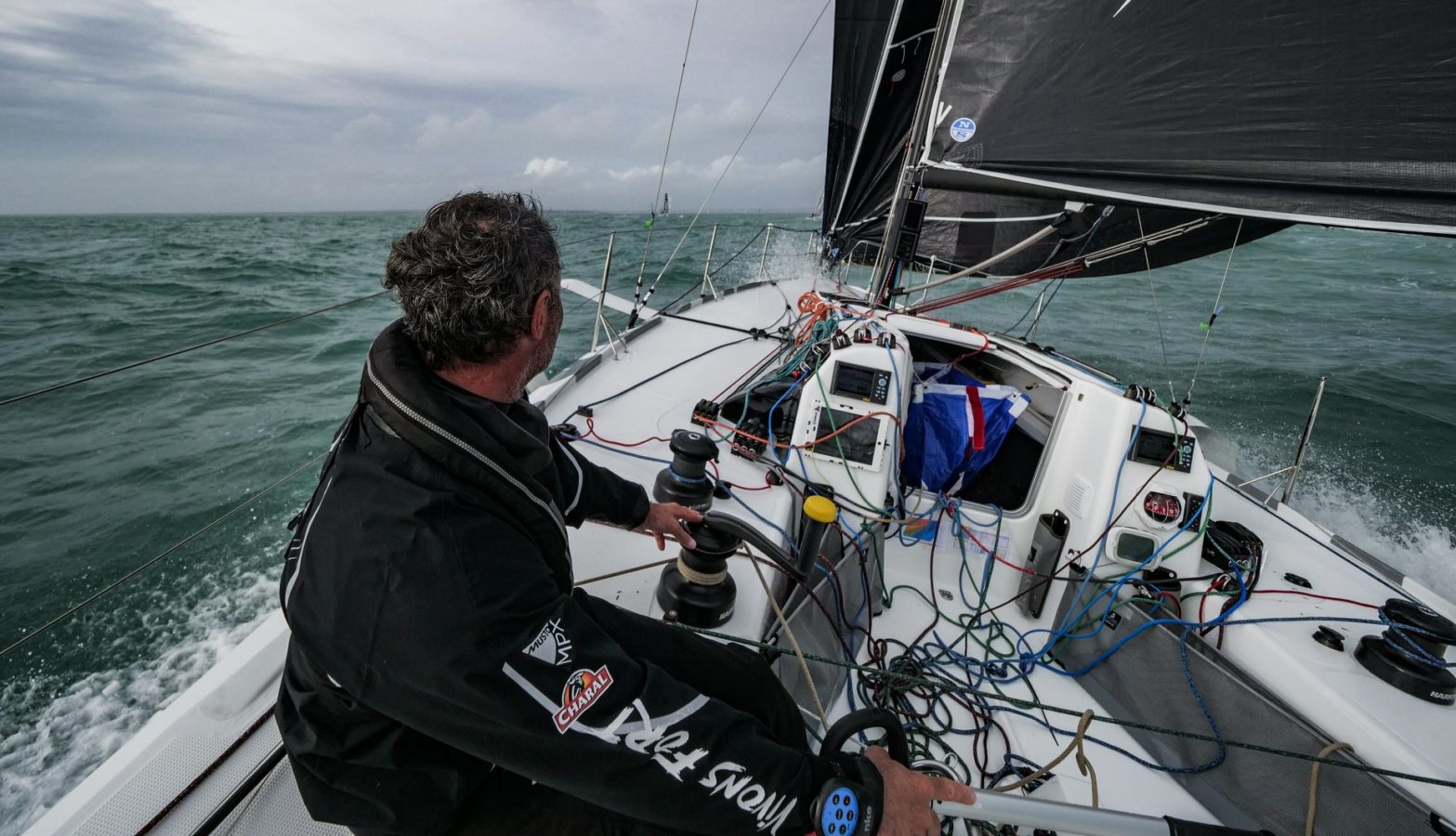
2019 SOLITAIRE URGO FIGARO 3 PREVIEW
CONQUERING THE SOLO FIGARO
La Solitaire Urgo Le Figaro To Set Off For Leg 1
📸 Alexis Courcoux
The main event for the Figaro skippers in this 2019 season is fast approaching. La Solitaire – Urgo Le Figaro will set off on Sunday 2nd June from Nantes with the first leg to Kinsale in Ireland, before returning to Roscoff and Dieppe over the next three legs. 47 skippers aboard their new Beneteau Figaro 3 hydrofoils will be in the starting blocks hoping to win this 50th edition, and a third of the fleet are fully equipped with North Sails. The Solitaire is considered to be a challenging and demanding competition on every level, psychologically, physically and tactically. Tenacity, surpassing oneself, rigor and vigilance are some of the skills to be used during this prestigious solo event on the Figaro circuit. This year, the challenge is all the more daunting with a plethora of decorated solo specialists who have already won the event, such as Armel Le Cléac’h, who has just won the Solo Concarneau, Jérémie Beyou, Yann Éliès, Alain Gautier and Michel Desjoyeaux.
📸Jérémie Beyou / Charal Sailing
The first edition of the Solitaire du Figaro was launched in 1970 and was then called l’Aurore (Dawn), organized by the French newspaper of the same name. In 1980, the Le Figaro newspaper bought the rights to the event and renamed the competition. For many sailors who are waiting for their future offshore racing boat to come out of the yard, this Solitaire represents an opportunity to continue racing at a high level on a one-design boat and to develop confidence and performance. The challenge for the entire fleet remains to master this new generation of foiling.
READ MORE
READ MORE

ETCHELLS WORLDS TOOL KIT
Get The Most From Your Etchells
The 2019 Etchells Worlds is around the corner and here’s our Etchells Tool Kit for you and your team with tips and relevant information on sail trim, boat tuning and local knowledge.
#NSVictoryList
There is no better performance test of an Etchells design than the results it produces. In 2019 alone, North Sails clients won all the major regattas in Australia and the US.
Quick Tips That Make All The Difference
As your team prepares for the Worlds, we have compiled a series of speedy tips from North Sails Etchells experts that will help you step up your results.
What Worked For The 2018 Worlds Champions
Sailing in a 94-boat fleet stacked with past world champions, Martin Hill didn’t go into the 2018 Etchells Worlds in Brisbane, Australia expecting to win. Find out how team Lisa Rose rose to the occasion on the last day to win the title.
Dog’s Mast Lever System
The Etchells is one of the most competitive one-design classes in the world and sailors have been searching out extra speed gears for over fifty years. One recent innovation is two-time Etchells World Champion Andrew “Dog” Palfrey’s Mast Lever System.
Corpus Christi Bay In Late June
For the past 50 years, Mark Foster has raced and sailed in Corpus Christi, the venue of the 2019 World Championship. Find out more about the wind, waves, and current patterns that normally occur during a June afternoon.
Benj’s Secrets
Multi-time Etchells World Champion Steve Benjamin shares pretty much everything about his Etchells program – tuning numbers, sails, crew and boat setup, the team and their role in the game.
The Tactician Role
World Champion Michael Menninger shares his insights from the Etchells tactician seat. Managing starts, strategy decisions, planning downwind legs, and other important decisions on the boat.
Fine Tune with North
Find your groove. Get your numbers. Be confident in all wind conditions. After countless hours of sailing, sail testing, and competing in the Etchells, our championship-winning sails will get you up to speed quickly.
Get Up To Speed
Pulling all the pieces together can be challenging. The North Etchells Speed Guide will help you leverage our expertise to make the most of your Etchells sailing.
Our Etchells sails deliver great results for our clients. Contact your North Etchells expert and join us at the front of the pack.
READ MORE
READ MORE
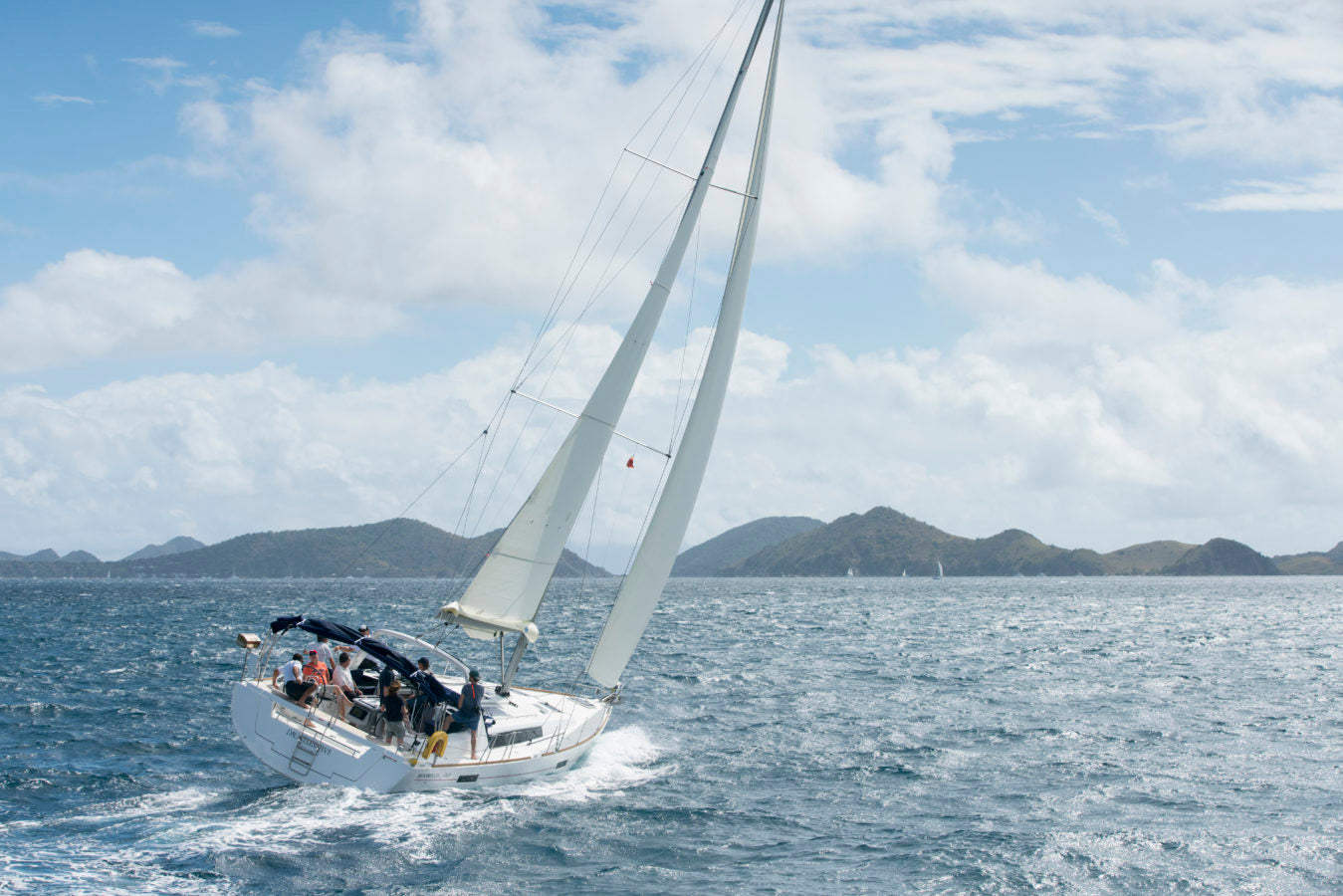
CRUISING SAIL TRIM: PUTTING IT ALL TOGETHER
If you do everything you can to reduce sail power with the sails you’ve got up, and you are still overpowered, it’s time to reduce sail area.
READ MORE
READ MORE
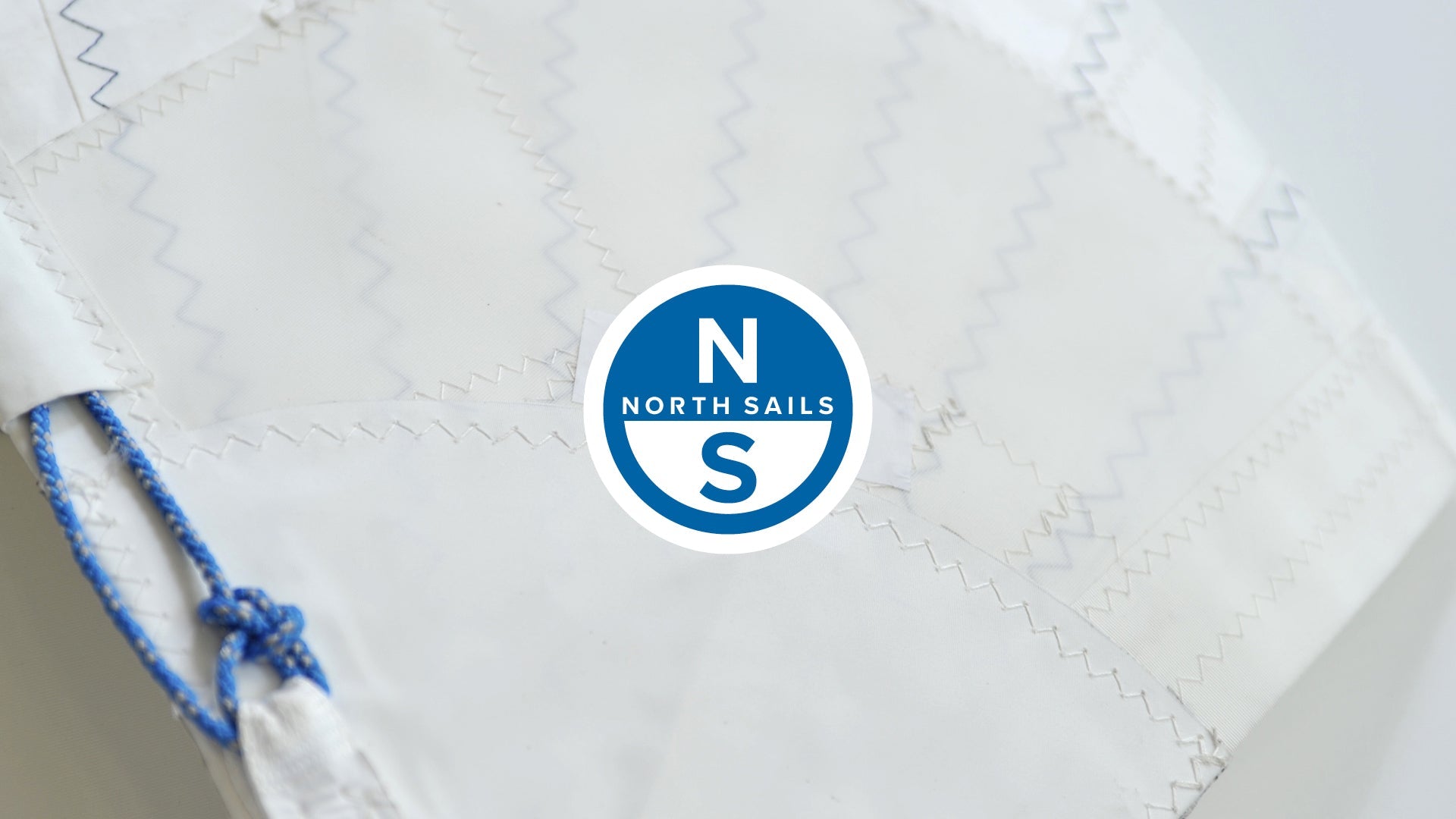
ETCHELLS SPEED GUIDE
North Sails expert Noel "Nitro" Drennan answers your Etchells speed and boathandling questions.
Who sails in the Etchells Class?
Etchells one-design keelboats have been around since 1966 and provide one-design racing at its highest level from Australia to the U.S. to Europe. The class culture is focused on providing excellent racing against both pros and amateurs, including many of the same pros found aboard America’s Cup and grand prix boats. At the elite end, coaching is common; the amateurs prepare well enough to beat the pros, which means the pros also need to prepare well if they want to win. The Etchells has many long-term class sailors, a testament to the class and the quality of racing it provides.
What is the ideal Etchells crew size?
The crew weight limit is 285 kg. (629 lbs.), and you can either race with three or four crew members. This gives a wide variety of crew options. Ideally, your crew size is close to the maximum class weight and they are able to hike hard. That being said, many crews don’t hike hard all day long and still perform well through excellent steering and sail trim, which is the most important factor in class success.
What’s the biggest difference between sailing with three or four crew members?
While there’s more space on boats with only three, larger crew, there are more hands with four for maneuvers. Crew communications can be different, too. Many of the four-up crews have the luxury of a designated tactician, whereas three-up crews have to divide the sailing roles and tactical decisions between them.
Where can you buy an Etchells?
Fortunately, the Etchells has three world-class boat builders on three continents. Second-hand boats are also readily available (see class website), ranging from $3,500 US for a starter boat to $60,000-90,000 for a boat in tip-top race condition.
How do you transport an Etchells?
An Etchells is relatively easy to tow. Most SUVs can pull the all-up boat-and-trailer weight of 2,300 kg (5,000 lbs.). Our top tip is to have your mast lifters sorted out before the regatta to speed the pack-up. We use a single-post lifting pole, as the aluminium masts are quite light.
What kind of inventory does North recommend?
North Sails has well-proven off-the-shelf sail models linked to a current tuning guide, so getting up to speed is easy. That being said, we are always looking for your next speed edge. The current North inventory has options to cover the wide variety of wind and sea states found at regattas all over the world. A few of our sail models have been around for years; the GM series of headsails has been a class favorite for over 25 years and is still winning races today.
Etchells Tuning
What are the basics of tuning the Etchells rig?
The North Sails tuning guide helps you set up your mast and rig properly. It covers rig set-up including spreaders, mast step, mast rake, and some key jib-trim pointers. It also describes the base shroud tension settings we recommend and the changes you need to make as wind speed rises and falls. A key step during the set-up is to measure the mast base relative to the mast collar using the method described in the tuning guide, marking the aft deck 12 feet (3655mm) from the aft part of the mast collar and measuring the mast step from that position at 12 feet 6 inches (3830mm). The boats are close to identical, but this exact mast-port-to-mast-step measurement relationship is key to each boat.
What are the “base” shroud settings for the Etchells?
We recommend a base shroud setting for 9 to 11 knots as per the tuning guide. From there, it is an easy process to power up by loosening both upper and lower shrouds below 9 knots, or to depower when the wind is above 11 knots by tightening the shrouds. Recently the class has evolved to adjusting the lower shrouds through a larger range than the upper shrouds. On our boat, I usually only adjust my upper shrouds a total of five turns (two turns below base or three turns tighter than base). I adjust my lower shrouds 11 turns in total—four turns below base and seven turns tighter as it gets windy and we get overpowered.
📸 Bob Grieser
Upwind Trim Guidelines
Where does each person sit when sailing upwind?
Upwind, fore-and-aft crew positions are fairly stationary but nudging slightly forward in light air and slightly aft when windy and/or in waves.
What are the keys to Etchells sail trim?
When sailing upwind, we recommend focusing on helm balance as much as the actual sectional shape of the sails. In no boat more so than the Etchells do you trim the entire sail package together, rather than set up the mainsail and headsail individually. If the helm is balanced, the boat will respond. Note that even though it is smaller, the headsail usually provides the majority of the drive force, so it deserves your full attention.
What are the key controls for changing gears when wind and sea state change?
The mast lever has been a big improvement, as it definitely makes quick mast-bend changes easy. Now it’s possible to maintain a nice mainsail luff curve while adding forestay sag to suit your light-air headsail.
When do you change from a lighter-air jib to one for windier conditions?
The most common light-air jib is the LM2L, which is designed for up to 12 knots—although we’ve seen some crews use it successfully in much higher windspeeds. The best option in 12 to 18 knots is the LM2H. The still-popular GM jib is favored by many sailors as an all-purpose sail from 10 to 25 knots.
📸 Bob Grieser
Downwind Trim Guidelines
What are the keys to downwind speed in the Etchells?
Downwind in the Etchells rewards both deep-angled tactical racing and strong surfing techniques. It is usually a pretty good workout downwind, pumping the spinnaker sheets and mainsheet, while moving body weight to help catch waves.
In lighter air, what are your top tips for downwind speed?
It’s very important to rake your mast forward in light air enough for a small inversion in the middle of the mast. Also, if there is any chop downwind, I like to keep my crew weight as low as possible, sitting or crouching on the cockpit floor.
Where does each crew member sit when sailing downwind?
Downwind in light air, moving crew weight forward is a good thing. There have been quite a few times we have seen teams gain on a run when a crewmember goes up on the foredeck to change jibs. We recommend keeping crew weight forward until the bow starts immersing into the back of the next wave.
Boathandling Guidelines
Any recommendations for starting in an Etchells?
As in all competitive classes, starting is paramount—and probably even more important in the Etchells with its long, relatively heavy, metre-style hull. If you’re not up to best speed at the gun, you definitely fall off the front row. Typically, if you start well and can hold your lane for three minutes, you are going to be up there at the first upwind mark.
How do you tack the Etchells?
Good roll tacking and jibing in light air pays big dividends. A long slow tack gives you the chance to gain many meters to windward, as the boats will carry their way directly upwind.
What are some tips for good light or heavy air jibes?
When it’s windy, especially in big waves, I like to jibe the mainsail first, keeping the crew in the cockpit, and then jibe the spinnaker pole once the boat is stable. We often notice that the four-crew boats can gybe better than three-member crews. In light air, they can roll the boats harder, and when it’s windy, they split the crew roles more effectively.
How do you make a fast spinnaker set on the Etchells?
Here’s a good routine that will help the forward crew get the spinnaker up and drawing in good order: 1) get organized on the offset leg; 2) ease the ram lever; 3) drop the mainsail traveler; 4) pre-set the spinnaker sheet to its downwind mark; 5) bear away to a downwind angle at the offset mark, so the spinnaker trimmer does not have to sheet on hard once the sail is drawing.
What is the key to a good spinnaker takedown?
Spinnaker douse systems with hard boxes have made takedowns a much easier process. The boxes are usually lightweight fiberglass or sailcloth on a frame that is retracted by shockcord to the side of the hull. The takedown is a manual system, but it works surprisingly well for either a windward or leeward drop. If it’s really windy, a leeward drop is safer, ideally on a starboard tack approach to the leeward mark.
How easily does the Etchells broach?
The Etchells are difficult to broach but they do tend to roll to windward in windy downwind conditions. When it’s really windy, we recommend easing the pole forward slightly and putting the bow up a little so you can keep all the crew on the windward side. This definitely feels a lot more in control, especially when the bow begins burying into the wave in front.
What boathandling drills do you suggest?
Always practice time-and-distance runs to be at your best speed at the starting gun. Set up practice starts with a goal of never having to bear away or run down the line as the gun fires. Drone footage of practice or race starts is an awesome way to review your starting technique. You’ll learn a lot from simply reviewing your turn rates. The long, slow meter-boat type hull loses minimal boatspeed, which can be very efficient in your pre-start maneuvering. I try to keep my turn rate long to maintain as much boat speed possible; in light air this can take up to 25 seconds per circle.
READ MORE
READ MORE
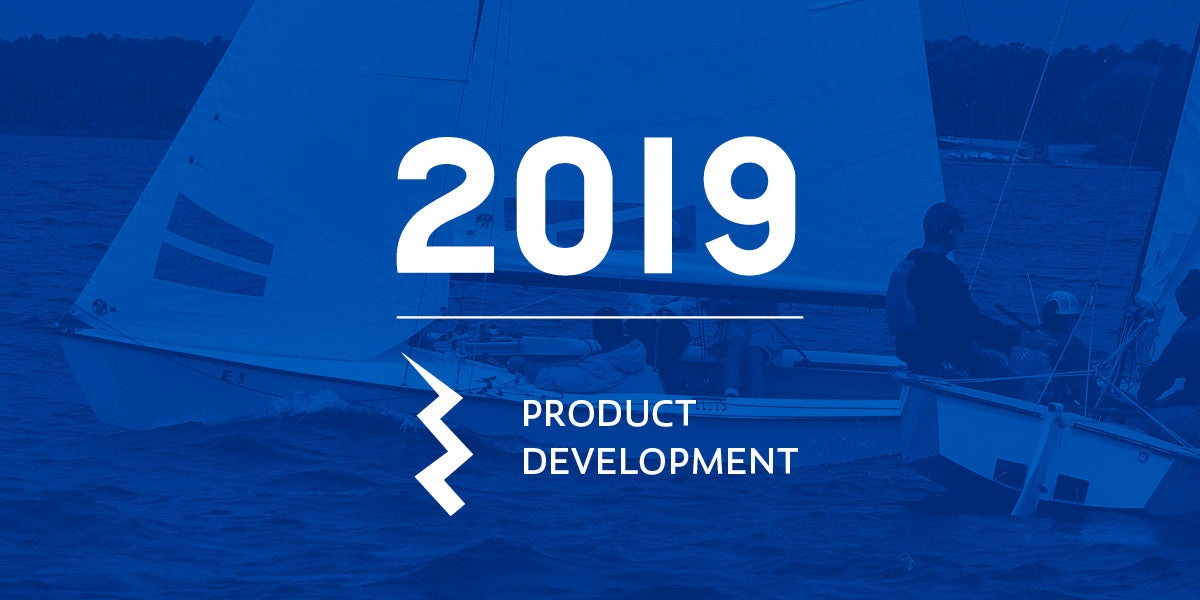
INTRODUCING THE RJF RADIAL LIGHTNING JIB
NEW RJF RADIAL JIB FOR THE LIGHTNING
The Perfect Match For The MF-2 Fisher Mainsail
For years the question of “what’s new” for Lightning sails has been answered as “not much”. Today there is a new answer.
Following the heels of the success of the V17 Radial jib, the North Sails Lightning team has developed a new radial jib that sets and trims to match with the MF-2 (Fisher) mainsail. After extending testing, we are excited to introduce the RJF Radial Lightning jib.
North Lightning expert Brian Hayes explains about the new sail, its development process and the success it has had on the race course:
“We had been working on radial panel layouts on several of our designs for a few years. Ched Proctor went through several test runs as we developed the successful V17 that is designed to match up with the M-5 main tuning system. We had been pushing for a “radial” layout for the MF-2 setup as well with the goal of developing a sail with similar shape as the JF-2 jib, using a radial construction to maximize the ability for the sail to hold its designed shape, for ultimate durability.”
The orientation of the cloth panels is a big deal in Dacron sails. Getting the shapes to do what we wanted takes time and extensive testing. “I’m really pleased with how the sail flies and the boat speed has been really good.”
The goal was to develop a jib with similar shape as the JF-2, using a radial construction to maximize the ability for the sail to hold its designed shape, for ultimate durability.
When final RJF version was completed (October 2018) Brian took it to the Charleston Wild Oyster, snapped it on Steve Davis’ boat and they won the event. “We still wanted to look at it some more at the Kings Day Regatta. I convinced Ched to use it with an MF-2 mainsail (I know… gasp!) and he won that event as well. A couple of clients noticed the sail and asked if they could buy it to try. In that short period of time those teams reported two second place finishes in two regattas. We felt confident the RJF jib was fast.”
Brian Hayes is heading to the World Championship in Espoo, Finland sailing with Steve Davis and Laura Jeffers. Then they head to the North Americans in Buffalo in August. They will have a new RJF jib in their inventory. “We are hoping we have as much luck as we did in Charleston” said Brian.
Shop Lightning sails.
READ MORE
READ MORE
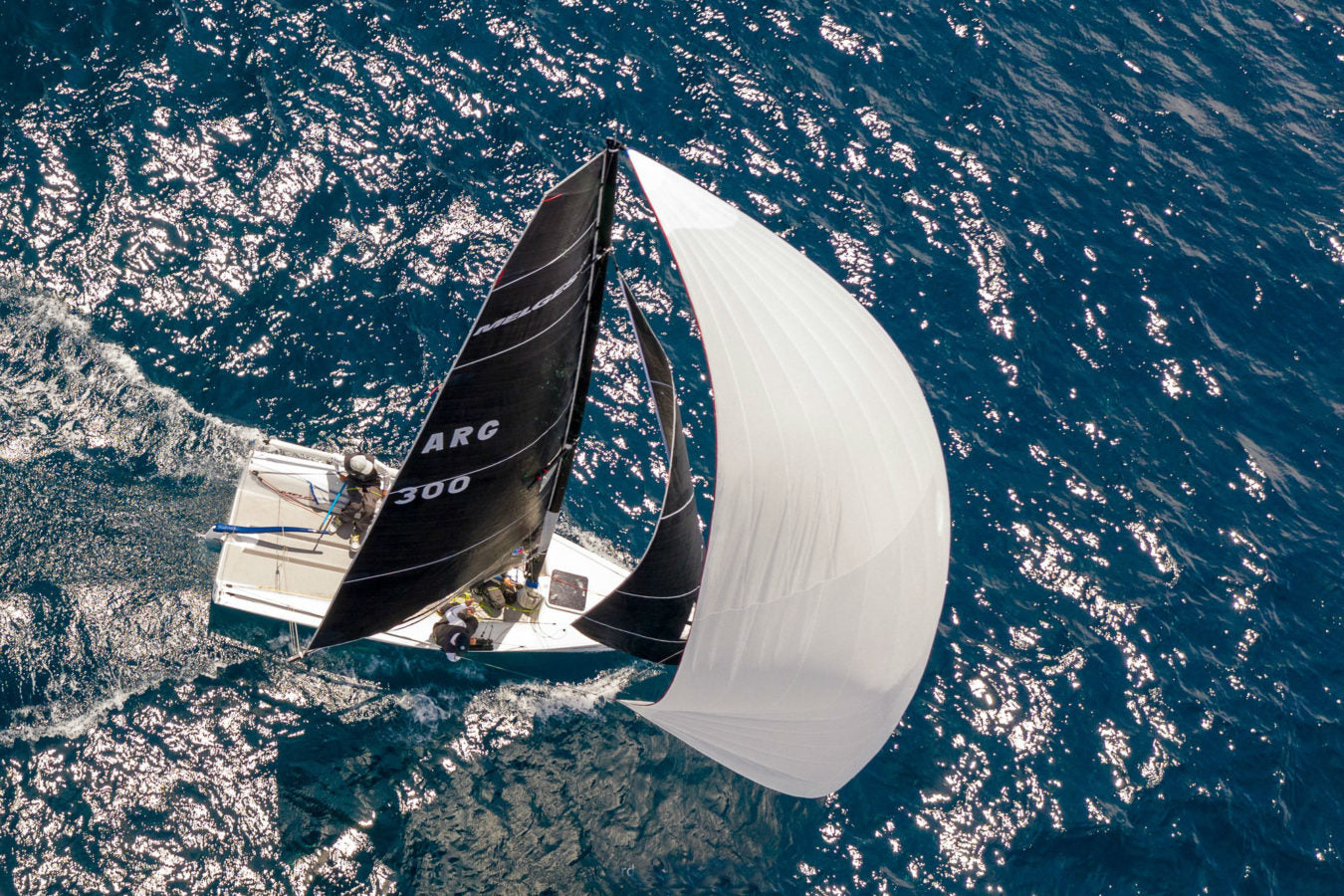
BOOGIE 2.0 WINS MELGES 20 WORLD LEAGUE EVENT
BOOGIE 2.0 WINS MELGES 20 WORLD LEAGUE EVENT
Youngest Crew Sweeps The Podium In Puntaldia
https://www.northsails.com/sailing/wp-content/uploads/2019/05/Melges20-Instagram_v2.mp4
North Sails Melges 20 Class Expert, Giulio Desiderato, called tactics onboard the winning Argentinian boat, Boogie 2.0 during the Melges 20 World League Event 2. The three day event in Puntaldia consisted of just four races with light winds ranging between 5-9 knots with the last race acting as a true test as the tricky conditions were made harder by wind shifts and greater variations in wind strength. For Boogie 2.0, this race was their favourite of the regatta after transforming a bad start into a third place finish by making significant gains during each leg.
Winning the event with a helmsman aged just 17 and no one on board older than 33, Giulio was tactician for the youngest crew on the water. Giulio and the trimmer, Matteo, have sailed the Melges 20 together as they have known each other for years through Olympic classes. In contrast, he started sailing with Pilu (helmsman) and Fausto (bowman) this year and they are already a winning team, showing serious potential in such an experienced, competitive fleet.
📸 MWL/ Barracuda Communications
We managed to catch Giulio to get his insight from the event:
AS TACTICIAN, WHAT DECISIONS DID YOU MAKE THAT RESULTED IN A GAIN?
Difficult to say. We didn’t choose to take big risks by banging any corners and we aimed to have clean starts every time, allowing us to always have different options open. I believe it is our consistency in results that have played a key part – we are the only team that always kept in the top five.
WHAT SAILS DID BOOGIE 2.0 USE?
We used a full North Sails inventory and were very satisfied with our speed throughout the regatta: Mi-2 3Di RAW Mainsail, Ji-4 3Di RAW Jib ( new design launched this season), R-2 Runner and V4-2R Reacher Spinnakers.
WHAT WAS IT LIKE RACING IN PUNTALDIA?
Puntaldia has been a wonderful discovery. I sailed here two weeks ago with the Melges 32 where we finished third and to come back with the Melges 20 is a pleasure. I love Sardinia and Puntaldia is a fantastic place.
WHAT RACE DID YOU FIND THE MOST EXCITING?
Ironically, the last race where our start was not good as we gained significantly during each leg, passing two boats on the last downwind resulting in a third place finish.
Congratulations to the crew of Boogie 2.0 and good luck at the next World League Event in Marina di Scarlino on the 14-16 June.
Browse the Melges 20 Shop Inventory, Tuning Guide and check out the full list of results.
📸MWL/Zerogradinord
📸MWL/Zerogradinord
READ MORE
READ MORE
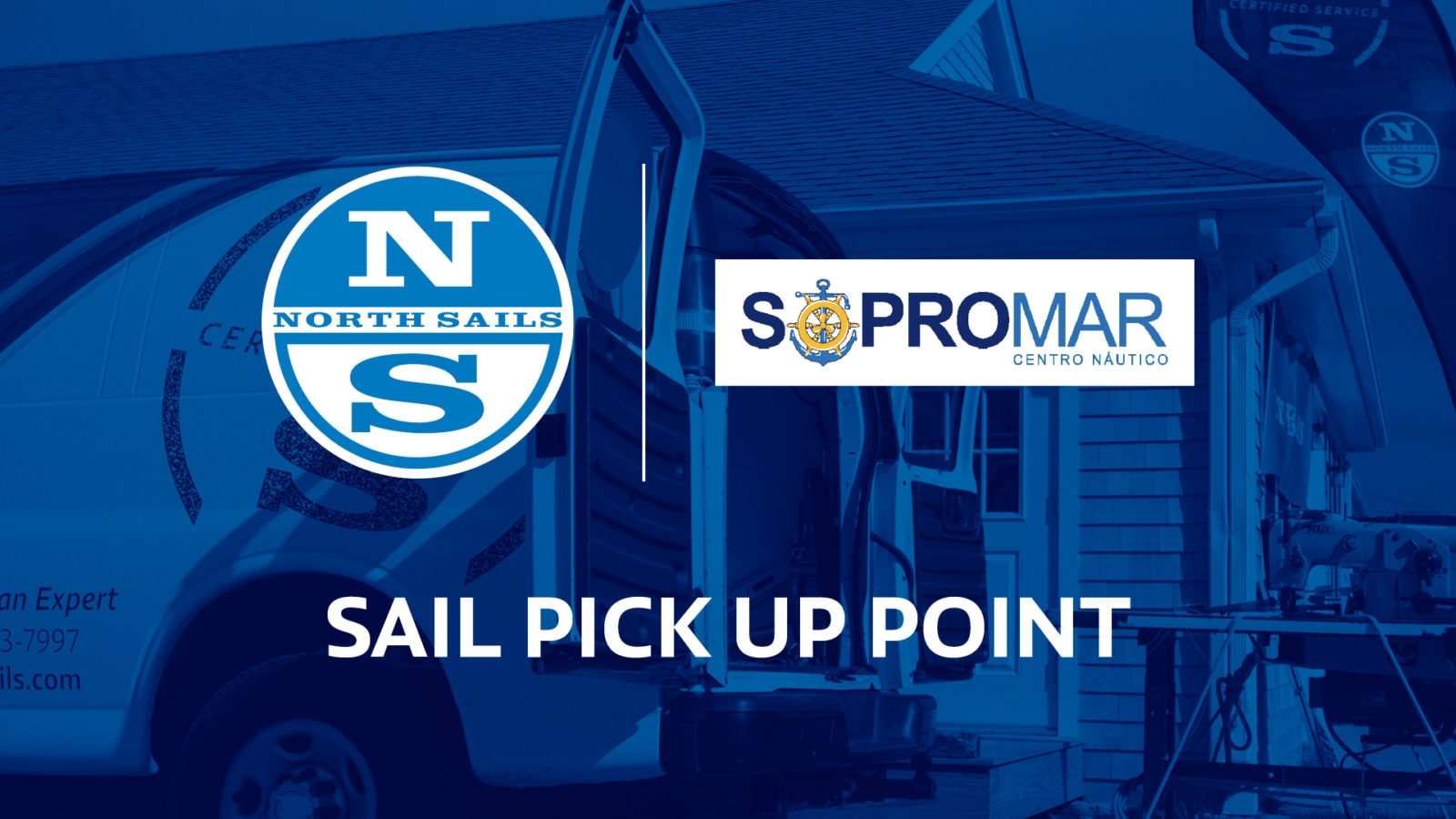
SOPROMAR- CENTRO NÁUTICO, NORTH SAILS PICK UP POINT
SOPROMAR - Centro Náutico
North Sails Pick Up Point
NORTH SAILS WITH A NEW PICK UP POINT IN PORTUGAL
North Sails has established a partnership with Sopromar - Centro Náutico de Lagos, a reference boatyard, with more than two decades already, that offers the customer a wide range of specialized services performed by professional teams. Its privileged location, in Lagos, make it a strategic point of passage and stay for all vessels.
As a new Pick Up Point North Sails, the boatyard now offers the service of collecting and delivering sails for maintenance and ensures customer contact with the North Sails Expert, in Portugal. We are now closer to our customers !
A NORTH SAILS TEM UM NOVO PICK UP POINT EM PORTUGAL
A North Sails estabeleceu uma parceria com a Sopromar - Centro Náutico, estaleiro de referência que, com mais de duas décadas de existência, oferece aos seus clientes uma vasta gama de serviços especializados realizados por equipas profissionais. A sua localização privilegiada, em Lagos, permite-lhe posicionar-se como um ponto estratégico de passagem e estadia para todas as embarcações.
Como novo Pick Up Point North Sails, o estaleiro oferece agora o serviço de recolha e entrega de velas para manutenção e assegura o contacto entre o Cliente e o North Sails Expert, em Portugal. Estamos, assim, mais perto dos nossos clientes !
CONTACTS - CONTACTOS
Sopromar- Centro Náutico de Lagos
Estrada Sopromar Estaleiro nº1 8600-716 Lagos LOCALIZAÇÃO / LOCATION
T: +351 282 763 889
E: geral@sopromar.com
W: http://en.sopromar.com/
READ MORE
READ MORE

SALVADOR BAPTISTA FERNANDES LEVA A NORTH SAILS AO EUROPEU 2019
SALVADOR BAPTISTA FERNANDES LEVA A NORTH SAILS AO EUROPEU 2019
O RESULTADO DEPOIS DAS PAN´s
Photo Credits: Luis Fráguas
Depois das Provas de Apuramento Nacional, realizadas em Abril e Maio, o velejador Salvador Baptista-Fernandes provou o resultado da consistência do seu trabalho e alcançou o apuramento para a participação no Campeonato Europeu de 2019. MUITOS PARABÉNS!
O Salvador fez um excelente trabalho com a sua R-4 !
Contactem-nos para saber mais sobre as velas de Optimist e espreitem a lista de vitórias na Classe aqui !
Deixamos, também, o útil Speed Guide apenas à distância de um clique aqui.
Sail Fast and Go Beyond!
READ MORE
READ MORE
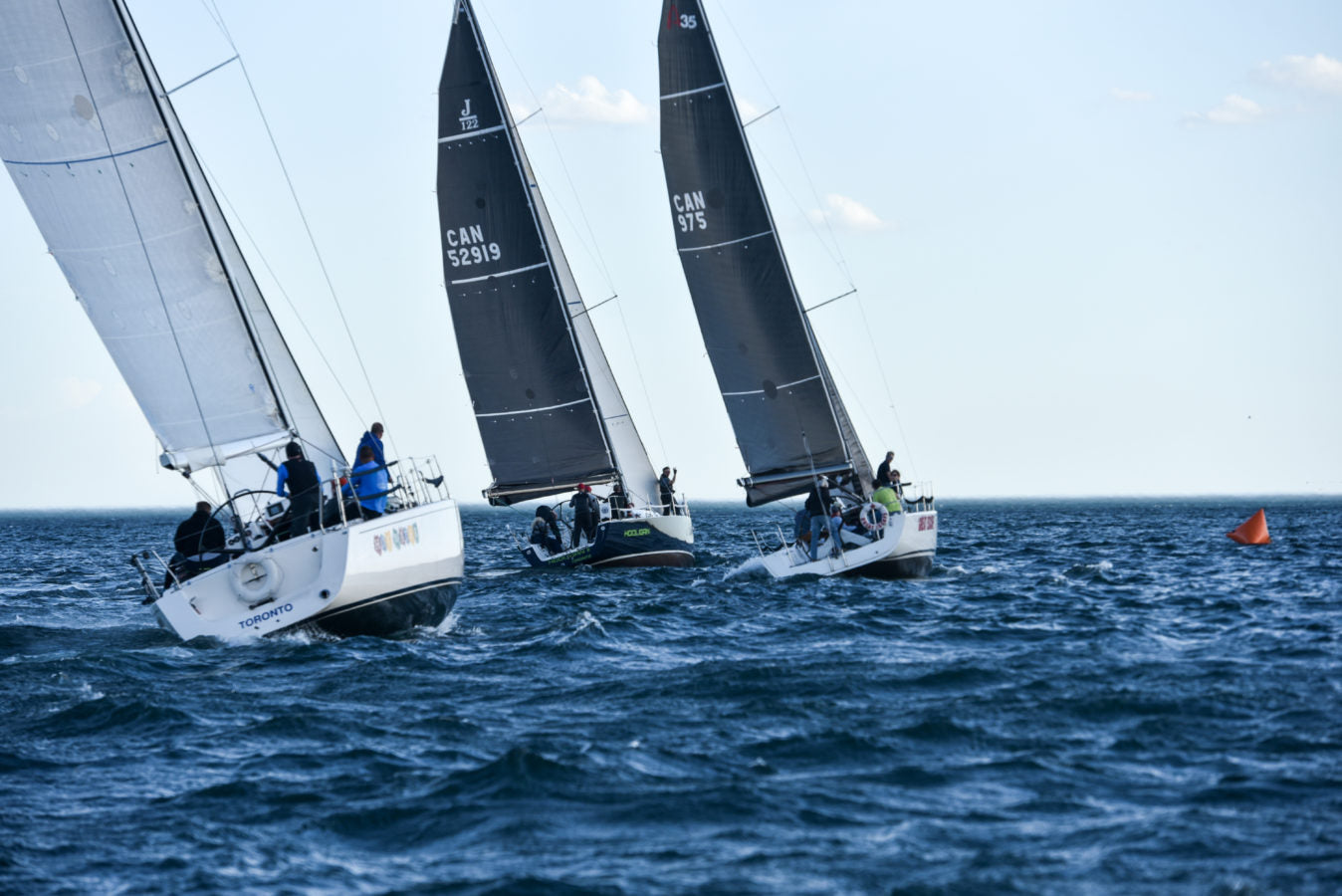
PRACTICE MAKES PERFECT
PRACTICE MAKES PERFECT
Local North Sails Experts Help Clients Start The Season Off Right
© Parker Media Management
Skippers and crews gathered at Mimico Cruising Club last week for an evening of practice for the upcoming season; combined with a handful of volunteers, media personnel, chase boat and committee boat for mark set.
Split into two divisions, boats lined up for an hour session of rolling starts split with drone footage to capture every move. Local North Sails expert Geoff Moore was on hand wanting boats start from the committee boat for the first portion of start then transitioned to North equipped J/122 Hooligan with Bruce Pierce to provide onboard tips and coaching. In addition, two other knowledgeable sailors were on hand to share their knowledge, one from a support rib and one on a boat. Together all three experts rotated boats throughout the rolling starts to share expertise for owners and crew alike to start better on the line.
Starts are such a critical part of your race, and take a lot of coordination to practice-you really can't do it alone.
A picture perfect evening with an offshore breeze and sunshine allowed sailors to hone their start line skills for the upcoming season. Local North Sails staff Kyann Rentzelos reflects; "I think seminars like the one Geoff Moore hosted are really beneficial. Starts are such a critical part of your race, and take a lot of coordination to practice-you really can't do it alone. Typically, you only get to do one per day, so getting better is a challenge. Coming from a dinghy racing background, this is something we drilled probably every day."
© Parker Media Management
© Parker Media Management
© Parker Media Management
© Parker Media Management
© Parker Media Management
© Parker Media Management
© Parker Media Management
READ MORE
READ MORE
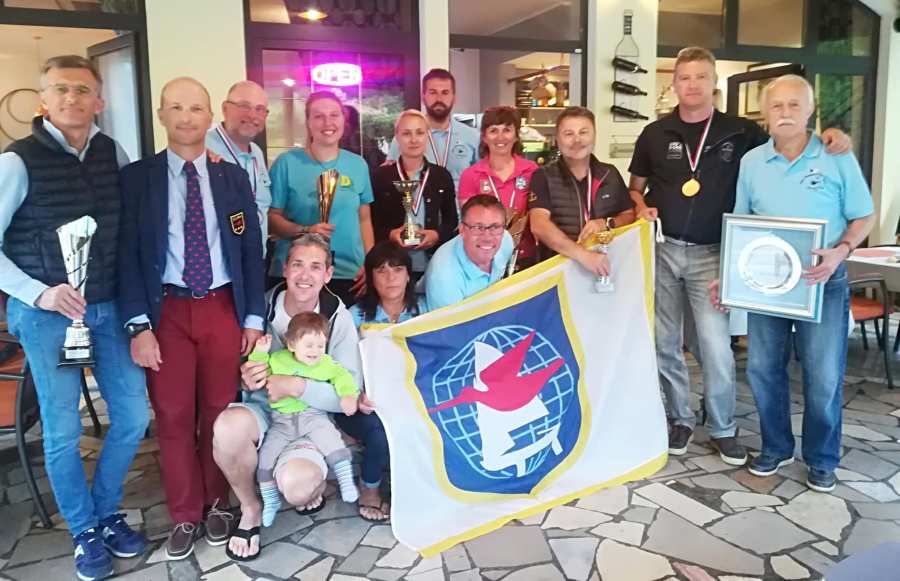
OTVORENO PRVENSTVO HRVATSKE ZA KLASU ŠLJUKA
Otvoreno Prvenstvo Hrvatske za klasu Šljuka
U Mošćeničkoj Dragi završeno je Otvoreno prvenstvo Hrvatske za klasu Šljuka na kojemu se natjecalo osam domaćih i deset stranih posada. Riječ je uglavnom o talijanskim posadama koje sve češće odmjeravaju snage s hrvatskim jedriličarima u ovoj klasi. Dobrosusjedski odnosi tomu nisu jedini razlog. Dogodine je Hrvatska domaćin Europskog prvenstva klase Šljuka u Splitu.
Tijekom tri dana Otvorenog prvenstva Hrvatske za klasu Šljuka odjedrena su svega tri od predviđenih devet plovova i to tek posljednjeg dana regate po slabom južinu jačine 5-9 čvorova. U Mošćenici se okupila većina hrvatskih posada, a konkurenciju su dodatno zaoštrili Talijani i jedna njemačka posada.
Naslov državnih prvaka drugu godinu zaredom osigurala je posada Luka Jerčić i Josipa Prosinečki iz JK Split.
Regata se bodovala i za Adriatic Snipe Series kup u kojemu su prvaci Hrvatske zauzeli šesto mjesto iza vodećih talijanskih posada. Drugo mjesto OPH za klasu Šljuka pripalo je posadi Marko Marinović - Vedrana Polić iz JK Split, a treće posadi Milko Volarić - Dean Pavlak iz JK Galeb Kostrena. Dok kompletne rezultate regate možete pronaći na ovom linku.
Mošćenička draga je poznata po dobroj organizaciji i zato nam uvijek dođu i talijani u velikom broju. Jedino što nije ispalo kako se očekivalo je bilo to što smo prva dva dana imali bonacu. Inače uvijek u poslijepodnevnim satima zapuše maestral, ali eto ove godine ga nije bilo. Ali Draga ipak nije iznevjerila, pa je treći dan poslijepodne ipak zapuhalo. Uspjeli smo odjedriti prava tri plova i na kraju se sve posložilo. Inače su glavni organizatori regate Nikola Dešković i Igor Staraj iz JK Orion i još jednom ih želim posebno pohvaliti, ali ove godine je posebno priznanje za dugogodišnji trud i angažman otišlo u ruke g.Tone, koji je dugogodišnji član JK Orion i jedan od idejnih začetnika ove regate. Ove godine je regata imala i jednog visokog gosta, koji je ujedno i natjecatelj s dugim nizom gostovanja u Moščenićkoj dragi, ali ovaj put je stigao u svojstvu komodora klase, talijanski jedriličar Pietro Fantoni.
Damir Vranić, tajnik klase
Spomenute klubove povezuje i priča o "slavnim danima" klase Šljuka u Hrvatskoj. Jedriličarski klub Galeb bio je organizator slavne Riječke međunarodne regate za klase Šljuka, Laser, Flying Dutchman, a kasnije i 470, koja je tijekom 60-ih i 70-ih godina znala okupiti i stotinjak brodova na Mošćeničkoj plaži Sipar. Tamo je 1970. godine održano i prvo europsko prvenstvo klase Šljuka u Hrvatskoj.
Kada je Jedriličarski savez sredinom sedamdesetih godina odlučio klasu Šljuka zamijeniti klasom 470, uz već prisutnog Flying Dutchmana, broj jedrilica i aktivnih jedriličara u klasi Šljuka na Jadranu postupno se smanjivao sve do prestanka održavanja regata.
2006. godine Damir Vranić i Bojan Grego doveli su nove Šljuke u Kostrenu, a četiri godine kasnije, ovi entuzijasti u Omišalj su doveli i Južnoeuropsko prvenstvo klase, na kojemu se okupilo tridesetak jedriličara iz čitave Europe, ali i dalekog Brazila. Danas je u Hrvatskoj petnaestak brodova od kojih se devet redovito natječe na regatama u zemlji i inozemstvu. Obnovljena flota s ambicijom daljnjeg rasta odlučila je Klasi predati kandidaturu za organizaciju Europskog prvenstva 2020.
Organizacija Otvorenog europskog prvenstva za klasu Šljuka 2020. svečano je dodijeljena Jedriličarskom klubu Split na prošlom europskom natjecanju u finskom gradiću Poriju.
Očekuje se dolazak osamdesetak posada iz Europe i svijeta. Svoj dolazak u Split već su najavila neka od najvećih imena Klase, svjetski prvak Alexandre Tinoco iz Brazila, jedriličarska legenda Augie Diaz, dvostruki svjetski prvak u klasi Šljuka i svjetski prvak u klasi Zvijezda, američka posada Ernesto Rodriguez i Kathleen Tocke, osvajači zlatnog odličja zapadne hemisfere, posade iz Kanade, Argentine, Engleske, Španjolske, Belgije, Poljske, Norveške...
Bit će to najveća regata klase u Hrvatskoj još od šezdesetih i sedamdesetih kada se na regatama u Mošćenici znalo okupiti pedesetak Šljuka.
PRIPREMILA: JOSIPA PROSINEČKI
READ MORE
READ MORE
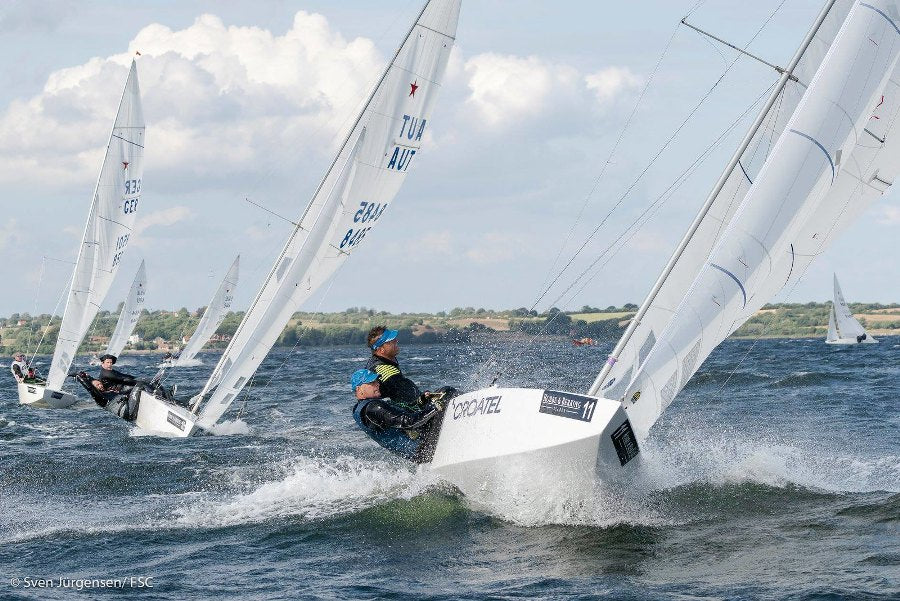
EUROPSKO PRVENSTVO KLASE ZVIJEZDA
Europsko prvenstvo klase Zvijezda
FOTO: SVEN JURGENSEN
Naša najaktivnija posada u klasi Zvijezda, Marin Mišura i Tonko Barač, nastupili su na Europskom prvenstvu klase koje se jedrilo između 13. i 19. svibnja.
Čak 90 posada je nastupilo na ovoj regati koju je organizirao Fraglia della Vela Riva iz Riva del Garda, a među njima je bilo toliko svjetskih i olimpijskih prvaka i nositelja medalja, da bi se s tim podatkom rijetko koja regata na svijetu mogla nositi!
Naši momci su nastupili neopterećeni plasmanom, jer osim povremenih izleta u inozemstvo u nas imaju priliku jedriti samo na jednoj do dvije regate godišnje, a na njima su redovito dominantni.
Unatoč malo ležernijem pristupu ipak su ostvarili izvrstan rezultat i regatu završili na vrlo dobrom 12. mjestu.
Odjedreno je 9 plovova, a glavni cilj naše posade je bio plasman među najboljih deset. Razlog tome je što je ova regata dobila status "grand slama", kategorije koju Star Sailors League želi dodijeliti određenim regatama, a koji za sobom nosi i poseban princip jedrenja završne faze natjecanja. U tom sustavu ako se plasirate u taj vršni dio bodovne liste imate velike šanse da se probijete do samog vrha, a detaljan opis jedrenja po tom sustavu je opisan na kraju ovog članka.
Više detalja o nastupu naše posade dobili smo iz prve ruke od kormilarskog dijela našeg dvojca:
Generalno gledajući jedrili smo dobro. Pogotovo s obzirom na vremenske uvjete. Bilo je hladno, prosjek vjetra je bio veći od 15 čvorova. Uvjeti po kojima je važnije "stiskanje" broda od tehnike jedrenja. A kako se nismo nešto posebno trenažno spremili za regatu to sam zadovoljniji s 12. mjestom. Moram reći da sam za ono jedno 34. mjesto najodgovorniji ja, jer sam pogriješio stranu. Znao sam da treba ići desno, ali nešto me je odvuklo lijevo... stvarno nemam opravdanja. Da smo taj plov završili među prvih 15-16 sigurno bi završili među najboljih 10. To je bilo bitno jer se onda kasnije jedri sistem eliminacije u kojem se sve može dogoditi. Ritam jedrenja nam je bio po dva plova u danu s tim da smo jedan dan odjedrili samo jedan plov, ali smo zatim to nadoknadili s tri plova idući put. A taj dan kad smo imali tri jedrenja svi smo se vratili na kopno maksimalno umorni. Inače, na regati je bilo toliko svjetski prvaka i olimpijskih pobjednika da regata spada u sam vrh po svakom pogledu. Generalno gledajući bilo je u rangu svjetskog prvenstva. Tako dobar sastav sigurno se može pripisati i činjenici da je nagradni fond regate bio 100.000 USD, a podijelio se na 20 najboljih od čega su pobjednici dobili 25.000 USD.
Marin Mišura, JK Split
Za ovako impresivan nagradni fond (bar u svijetu jedrenja) zaslužan je pokretač SSL-a, ruski poslovni čovjek sa švicarskom adresom. Koliku strast ima prema jedrenju i koliki je mecena govori i podatak da je osim nagradnog fonda i za ovu regatu osiguran tracking sustav koji je osim klasičnog GPS praćenja uključivao i direktan video prijenos sa svake jedrilice i distribuciju svih medijskih sadržaja u živo putem interneta.
Osim spomenutog 34. mjesta naši momci su imali još jedan lošiji rezultat, 33. mjesto u prvom plovu. Ostali ulasci u cilj su bili mnogo bolji. Najlošiji rezultat im je bilo 17. mjesto, a čak 3 plova su završili u top deset.
O snazi i kvaliteti flote možda najbolje govori podatak da je na drugom mjestu završio legendarni Robert Scheidt, ovaj put s flokistom Henry Boeningom. Pobjedu je odnio par Mateusz Kusznierewitz i Frederico Melo. A Frederica se možda sjećate od prošle jeseni kad je bio flokist našem Tonću Stipanoviću na finalu SSL-a na Bahamima.
Iduća regata na koju planira ići naša posada je Svjetsko prvenstvo klase u Porto Cervu. Na put kreću 14. lipnja i zadovoljni su što je ove godine SP u Europi jer tada mogu sudjelovati s vlastitom jedrilicom, što je u svijetu Stella vrlo važno jer u samom vrhu presuđuju nijanse, a previše detalja vezanih uz trim konkretne jedrilice može biti presudno.
READ MORE
READ MORE
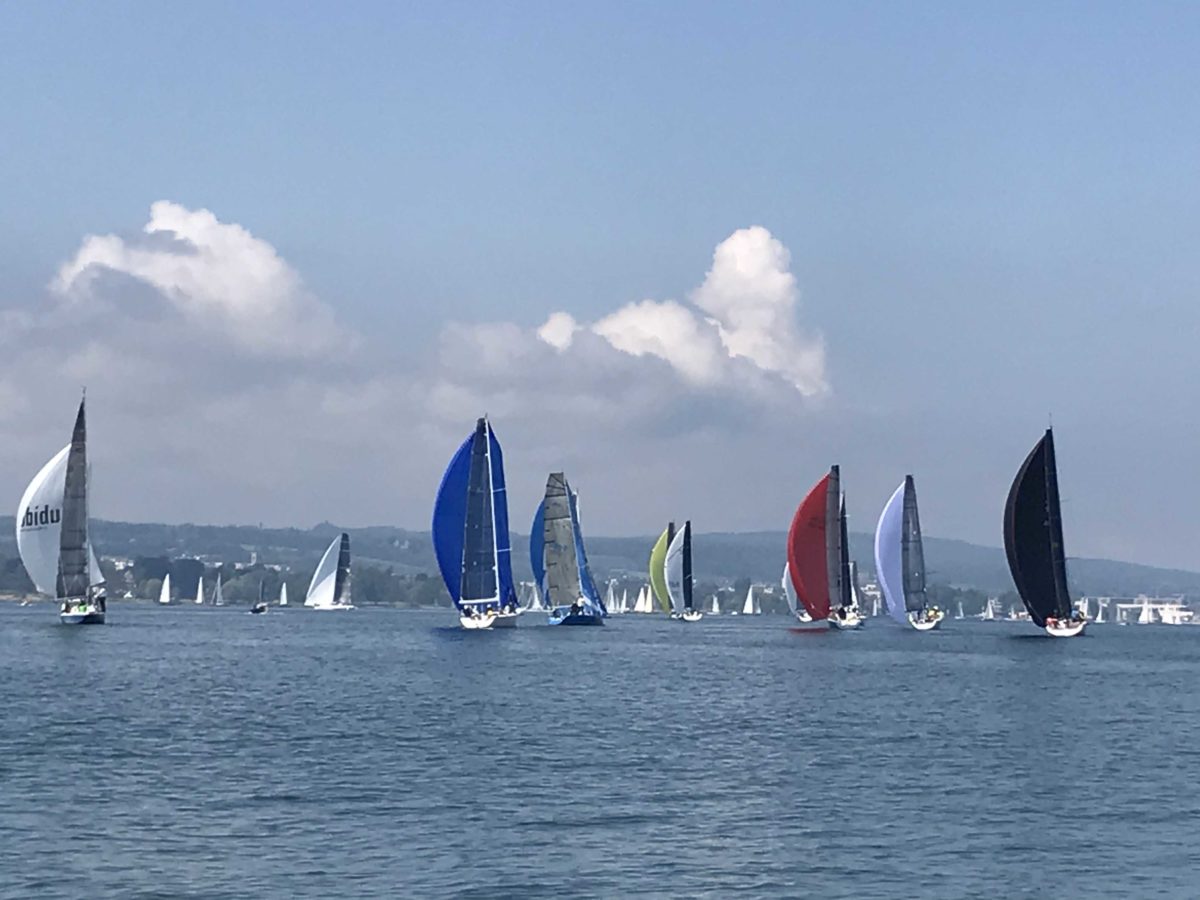
ERFOLGREICHE BODENSEEWOCHE 2019
ERFOLGREICHE BODENSEEWOCHE 2019, AUCH FÜR NORTH SAILS
Gegen 150 Boote massen sich vom 24. – 26.04.19 im Konstanzer Trichter, leider auch dieses Jahr mit schwierigen Windverhältnissen.
So konnten auf der Bahn ‚Echo‘ (auf der die Klassen ORC1, ORC 2, Sportboote und 6mR segelten) am Freitag nur ein Schwachwindlauf gesegelt werden, am Samstag immerhin zwei und am Sonntag reichte der Wind für einen 4. Lauf leider nicht mehr aus.
Trotzdem waren unsere Kunden im Gros zufrieden, da es doch etwas mehr Wind wie im vergangenen Jahr hatte.
Und wer an der Bodenseewoche schon dabei war, weiss, dass es ausser segeln noch sehr viel mehr gibt: Es ist ein Volksfest für Gross und Klein, Segler und ‚Landratten‘!
Einige North Sails Resultate
ORC 1: 1, 2, 4, 5, 6, 7, 8
ORC 2: 1, 3
Sportboote: 1, 2, 3
Ausführliche Ranglisten finden Sie hier.
READ MORE
READ MORE
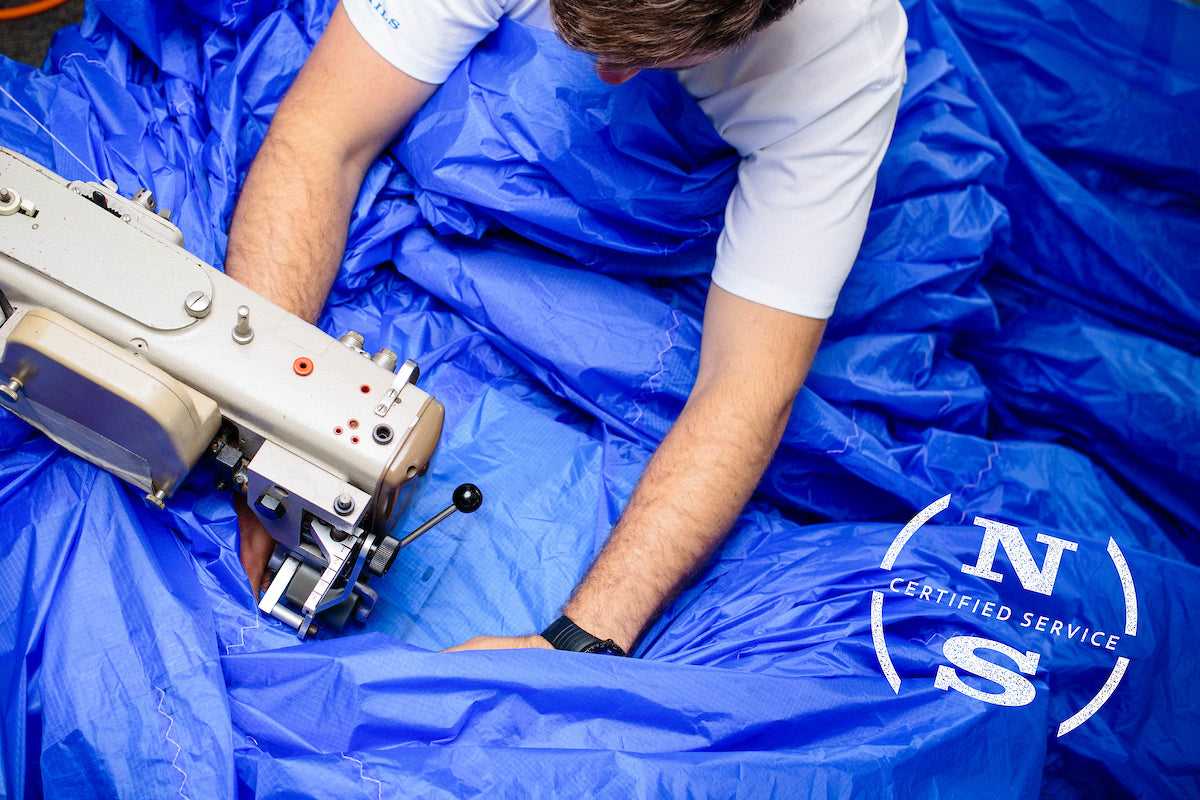
NORTH SEA REGATTA
NORTH SEA REGATTA
Wij zijn aanwezig, u ook?
28 mei is traditiegetrouw de Vuurschepenrace gestart (Scheveningen - Harwich) als onderdeel van de North Sea Regatta.
Volgende week, tijdens het Pinksterweekend, worden de inshore wedstrijden gevaren voor de kust van Scheveningen.
Zoals u van ons gewend bent zullen ook dit jaar onze experts aanwezig zijn tijdens dit jaarlijkse zeilfestijn.
Waar kunt u onze experts vinden?
Tijdens de Vuurschepenrace en RORC North Sea Race varen Bart Overgaauw en Wouter Köllmann mee in ORC 2 op de J/109 Joule en Archambault 35 Decatur.
Tijdens de inshore wedstrijden tijdens het Pinksterweekend is naast Bart en Wouter ook Jacco Huijgen aanwezig. Hij vaart mee op de Swan 45 K-Force in ORC 1.
Spreek onze experts vooral aan wanneer u vragen heeft of wanneer uw zeilen service nodig hebben. Wij helpen u graag.
North Sails Overnight Repair Service
Voor reparaties na de offshores en tijdens de inshores kunt u contact opnemen met Jacco Huijgen door te bellen of een Whatsapp bericht te sturen op +31(0)6 504 238 32. Tijdens de inshores verzorgen wij wederom een Overnight Repair Service, zodat u het gehele evenement met uw beste zeilen kunt varen.
Vuurschepenrace volgen
De Vuurschepenrace is te volgen via deze link
Wij wensen alle deelnemers veel succes en met name veel plezier!
READ MORE
READ MORE

#NSVICTORYLIST: ROLEX CAPRI SAILING WEEK
#NSVICTORYLIST: ROLEX CAPRI SAILING WEEK
The Bay of Naples Serves Up Race-Winning Conditions For North Sails Clients
📸 Borlenghi Studios / Rolex Capri Sailing Week
The 2019 edition of Rolex Capri Sailing Week featured 120 entries and North Sails clients delivered commanding control of the scoreboard. Starting the week off with the Regata dei Golfi, Caol Ila R stole the show, being the first to cross the finish line. Alex Schaefer and his crew were also awarded the overall Maxi Yacht Capri Trophy and won the Mini Maxi R division. The top six spots of the Mini Maxi division were fueled by 3Di and Caol Ila R’s win came in the last moments of the downwind leg with a well-executed sail change. Clients also filled the podium in the Maxi R/C, Maxi C/R division, ORC A, and took first overall in ORC B. The Capri ClubSwan Award went to Swan 80 Plis Play, winners of the Mini Maxi Cruiser/Racer division, and ClubSwan 42 BeWild, for the best performing Swans at the event. The Mylius Cup Trophy was won by Oscar3.
“Nothing means more to us than our clients and their performance. It is our primary goal to provide them with the support to be in shape for racing, and have the tools they need to perform to the best of their abilities.”
Sailmaker Bacci Sgarbossa along with two of his Casasco, Italy based Certified Service experts were onsite to provide sail repair services to all sailors. Each day, they were ready to take on the challenge of making sure every team was ship-shape for racing. Bacci and his team stayed busy repairing 50 sails across the five day regatta.
Sales Expert Alessio Razeto added; “Nothing means more to us than our clients and their performance. It is our primary goal to provide them with the support to be in shape for racing, and have the tools they need to perform to the best of their abilities”
Alex Schaefer’s Caol Ila R sporting their North Sails Helix, overall winners of 2019 Capri Sailing Week . 📸 Borlenghi Studios / Rolex Capri Sailing Week
North Expert Alby Pratt based in Sydney, Australia, Caol Ila R
Caol Ila R was on fire from day one. Their boat speed was spot on, and their crew work was top-notch, winning the Maxi Yacht Capri Trophy and overall Sailing Week title. The biggest highlight Pratt said was “winning when the points were that close was exciting. Spending most of the Winter season preparing for this first regatta, it was fantastic to see all of our hard work pay off.” Pratt commented;
“One of our most memorable moments of glory was at the bottom of the leeward leg, coming into the finish. We swiftly executed a sail change from our Helix to our downwind spinnaker as the breeze filled in and put us five boat lengths ahead of Jethou just before we crossed the finish line. It all came down to two seconds to win the regatta hands down.”
Aldo Parisotto’s Oscar3, winner of the Mylius Cup. 📸 Borlenghi Studios / Rolex Capri Sailing Week
North Expert Stefano Orlandi, based in Carasco, Italy, Oscar3
Event preparation was a vital part of the regatta outcome for Oscar3, and owner/ skipper, Aldo Parisotto was more than pleased when his team went above and beyond expectations. Stefano commented;
“Our first focus was to satisfy our team goals. We worked a lot this winter on mast tuning, and revamped our inventory with the addition of a new 3Di mainsail. We realized that all the hard work we put in pre-season paid off and maintaining the same core crew and leadership onboard made a huge difference. Winning our division and securing the Mylius Trophy in our first event of 2019 was a highlight.”
Mills 62 SuperNikka 📸 Borlenghi Studios / Rolex Capri Sailing Week
North Sails expert Alessio Razeto based in Carasco, Italy, SuperNikka
“Upgrading SuperNikka’s sail inventory stepped up their game in all the right ways. He commented; “We got a new 3Di mainsail and headsail before the event. With an optimal sail design and some fine-tuning of the rig, we got the perfect shape, which gave us an additional performance boost. We out-performed our expectations. This fleet is top notch, and your result is hard-fought. We never expected to be so close to our competition, and were happy with our third place finish in Mini Maxi Racer.”
Plis Play, Swan 80, winner of the Capri ClubSwan Award . 📸 Borlenghi Studios / Rolex Capri Sailing Week
The Capri ClubSwan Award Winner, ClubSwan 42 BeWild 📸 Borlenghi Studios / Rolex Capri Sailing Week
Clients on Daquet2, Confluence, and Drifter Sail 📸 Borlenghi Studios / Rolex Capri Sailing Week
READ MORE
READ MORE
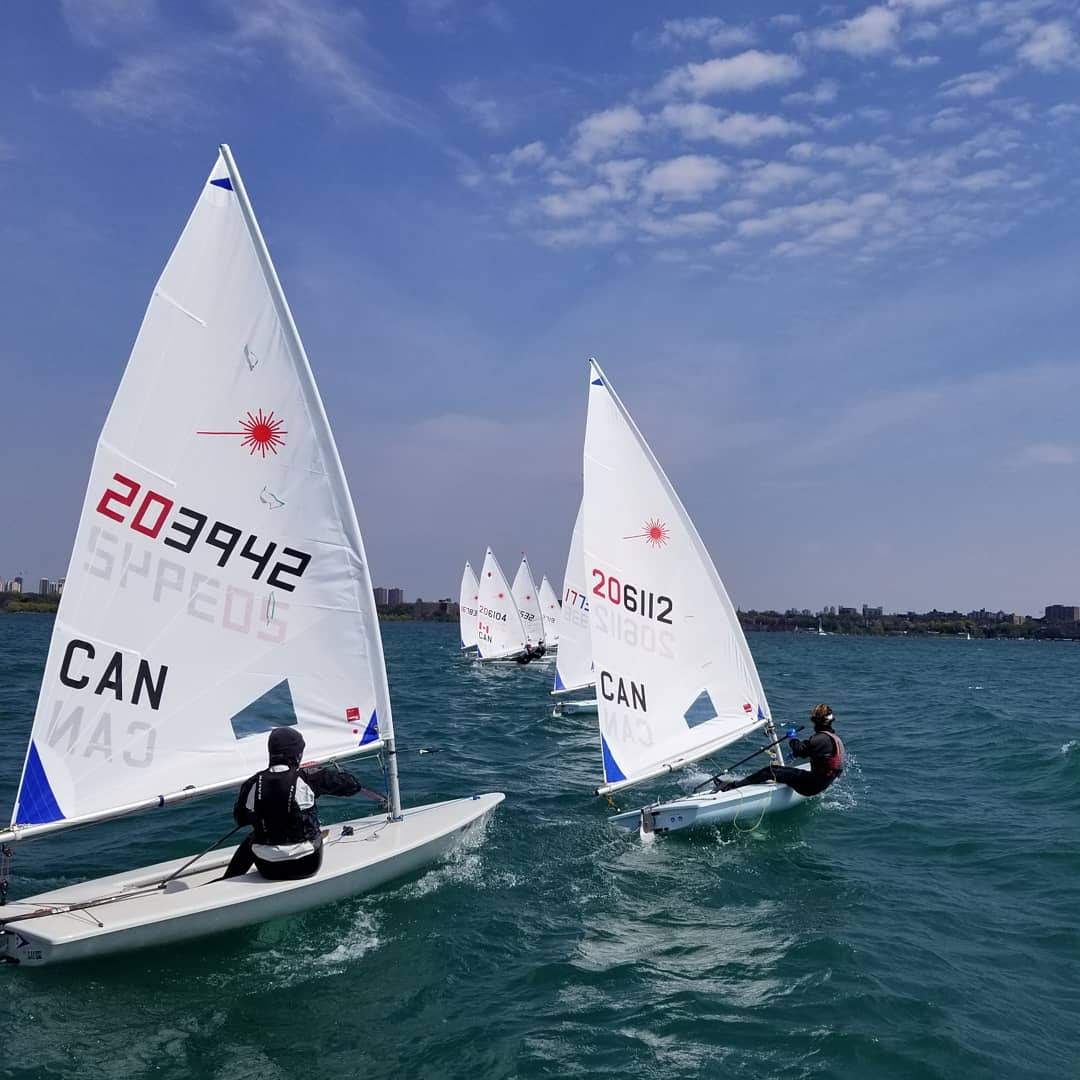
ICEBREAKER REGATTA CELEBRATES 50 YEARS
ICEBREAKER REGATTA CELEBRATES 50 YEARS
Low Temps Didn't Stop These Sailors
The annual regatta, which kicks off the May long weekend around here, took place this past weekend with chilly temperatures and overcast skies. While conditions were less than favourable, sailors were excited and eager to race. North Sails Toronto was happy to support the annual event, which marked its 50th year in action this year! A great accomplishment for the organizing committee and sailors alike.
Read the full recap from the organizers below:
Many sailing notables were here today to celebrate the 50th year of the Icebreaker. All of them could recall stories about how young they were when they did it. A full complement of Olympians were present on Saturday to show encouragement for sailing. Rod Davies sailed Laser, Richard Clark Volvo and Hobart racer represented Canada in Finn class. Tommy Wharton, Olympic coach for Lasers, Ken Dool, presently coach for Olympic Sailing and five Olympics, Thomas Fogh, National Team sailor, and now coach and Mike Milner, executive director of High Performance Sail, Canada debriefed after racing.
A great thank you for the years of support in all your capacities and for encouraging youth sailing.
The first day of racing started promptly at 11:00 a.m. with light breeze at 7 – 10 knots switching from 105 degrees to 85 degrees with persistent right bend making a favoured tack for all the day. Lasers, Radials and 4.7’s got 4 races off. Two generals for the Radial fleet.
2.4’s and 29ers got 11 races in and comments made were complimentary of race committee with speedy turnarounds. Conditions were overcast for entire day with low chop.
On the second day of the regatta there was good breeze at 90 degrees with little variation. Only one change of course at the 29ers course mid race. EYC race committee were on the ball. Wind shifts to right in last race allowed for lucky boats to gain some places. Heavier air benefited the weightier sailors at 10 to 15 knots. Despite a few capsizes a local sailor stayed sailing all the races. She looks promising because of her grit and getting very good starts.
A special thanks to all of the clubs who came from a great distance to compete on the long weekend including teams representing, Royal St Lawrence Yacht Club, Club de Voile Deux-Montagnes, and Britannia Yacht Club to name only a few.
Get ready for racing season with your local experts at North Sails. Contact your sailmaker today!
READ MORE
READ MORE
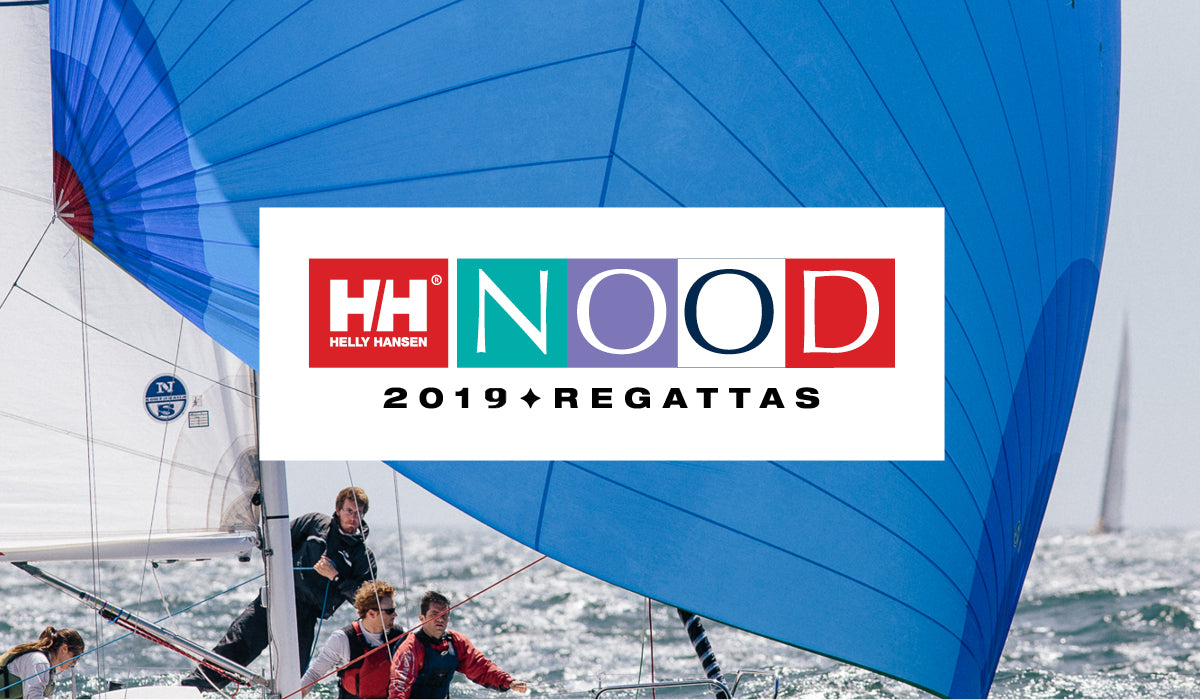
2019 HELLY HANSEN NOOD REGATTA IN CHICAGO
2019 HELLY HANSEN NOOD REGATTA
Chicago | June 7 - 9
North Sails is excited to continue our sponsorship of the Helly Hansen NOOD Regattas, and Chicago is the next stop on the circuit. North Sails local team, led by expert Perry Lewis will be on hand for all your sail care needs for the regatta, so whether you need to get your sails checked on prior to, or need overnight service during the race, our crew have your covered. Coupled with our sail care, the local team will be hosting a local knowledge panel to kick-off the event.
Local Knowledge Panel
North experts' and local sailors Perry Lewis and Keith "KC' Church will be hosting a local knowledge panel to help get you ready for the NOOD. Join us prior to the skippers meeting on Thursday June 6th at 6pm in the Chicago Yacht Club for some vital insights on sailing on Chicago waters, what to look out for, and hear how the experts plan to navigate the weekend. See the full schedule of events here.
Overnight Sail Repair
Knowing that the Great Lakes can deliver changing conditions without notice, our Certified Service team will be on stand by for any sail issues. Each day after racing, look for the North Sails team at CYC for sail drop offs. Perry Lewis will be at the Monroe clubhouse for sail pick ups, and Christian Koules will be at Belmont to service the classes docking there.
Monroe Station Perry Lewis 773-636-6767 | Belmont Station Christian Koules 847-814-4030
North Sails Rally Race
The perfect way to kick-off the cruising season, the North Sails Rally Race invites cruising boats of all sizes to compete at the NOODs. Join the regatta for one day of racing, then end up at the Chicago Yacht Club for the afterparty and Rally Race awards. Rally Race Notice of Race
North Sails Support
Need help prior to the regatta? Contact your team at the Chicago or Milwaukee loft today.
READ MORE
READ MORE
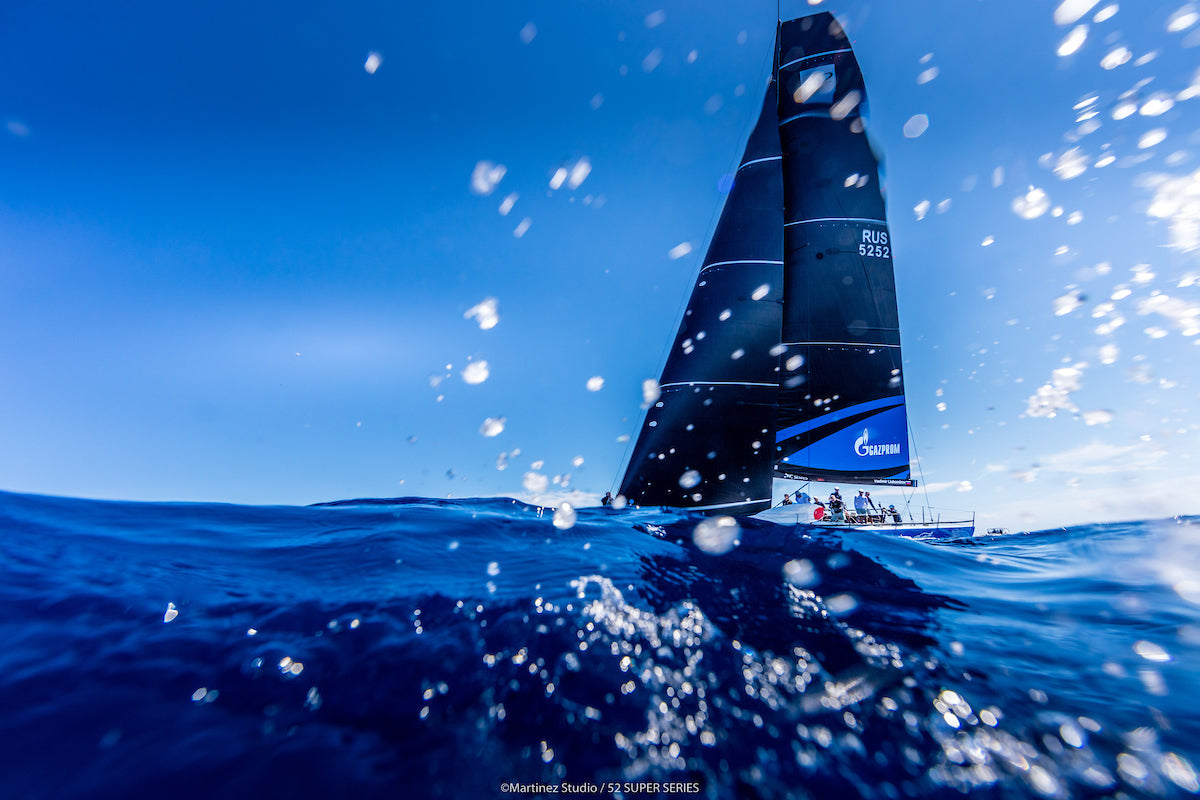
SÎME FANTELA ONBOARD TP52 BRONONOSEC
SÎME FANTELA: OLYMPIC GOLD TO TP52’s
New Boat. New Expertise. New Ventures.
📸 Nico Martinez / 52 Super Series
Brononosec recently launched the only new boat competing in the 2019 52 Super Series. They also have a fresh sailing team that includes Olympic gold medalist Sîme Fantela.
After winning at Rio2016 in the 470, Sîme (pronounced “Shee-meh”) is now sailing the 49er with his brother Mihovil. For most sailors, an Olympic skiff campaign would be enough of a challenge, but Sîme says joining Team Brononosec for the 2019 season is a great fit. “Doing the pro circuit gives me an edge in the Olympic world, but also vice versa—I am so sharp coming from a big fleet, where everyone is so hungry and all the guys are living one hundred percent the Olympic campaign. On the pro circuit, I’m quite young and I push hard, so I think I have the edges on both sides.”
Brononosec sailed Palma Vela as a warmup regatta after only a week of training on the new boat, so they were happy to post a couple of top-three finishes over four days of racing. “The goal was to see if everything works correctly,” Sîme explains, “see if we can get the boat around the course in one piece.” He laughs. “The shore crew must be quite happy because we didn’t have any major things for repair! And the sailing team is really happy with how the boat performs—there is no weak point of the equipment or the sail inventory. In a straight line we can beat all the boats, so that’s the best we can ask for the beginning of the season.”
“It is really good fun, really amazing sailing, 20 knots plus flying downwind surfing! We put the boat under nice pressure and nice loads, so I think it’s ready for the series.”
Despite straight line speed, there’s plenty of work to do before they will win regattas in such a tight fleet. The goal for 2019 is to synchronize teamwork and polish boathandling. “Everyone is trying to find the best way to run the boat from the start to the finish,” Sîme says, adding that he first met many of his new teammates just before the regatta. “It’s a mix of younger and older guys, all hungry with the same passion as me—wanting to win, wanting to give their best and perform well. Everyone is searching for that small, small difference and try to get an edge to win.”
📸 Nico Martinez / 52 Super Series
As a strategist, Sîme’s job is to keep an eye on the overall race course and feed his observations to tactician Morgan Larson. “Where the gains will be, where we should start, and which side we should take upwind and downwind.”
Sailing with fourteen people is quite different from steering a double-handed boat, and he’s excited by the chance to focus on one skill. “All my life I was doing many roles all together; meteorologist, strategist, tactician, and helm. Here every member of the team is doing one job. That’s why communication is super important; as few words as you can, but be precise. What you say, when you say it, and how you give information is as important as boathandling or tweaking and tuning the boat.”
Sîme also jumps in to help grind during the prestart, helps hoist and drop the spinnaker, and plays the vang downwind when the breeze is strong enough. “It is really good fun, really amazing sailing, 20 knots plus flying downwind surfing! We put the boat under nice pressure and nice loads, so I think it’s ready for the series.”
The first scoring event of the 2019 52 Super Series is underway in Menorca, and Sîme plans to focus on starting well. “We can improve definitely there, and that would be the biggest gain for our team.” As for those who tell him that big-boat sailing will distract from his 2020 Olympic goals, Sîme shrugs. “I tell them winning in the 52 Super Series is about consistency, so it’s very similar to Olympic sailing.” Such high-level racing is also a childhood dream come true, he adds. “I really like it, and I’m excited about the rest of the season.”
📸 Nico Martinez / 52 Super Series
READ MORE
READ MORE


